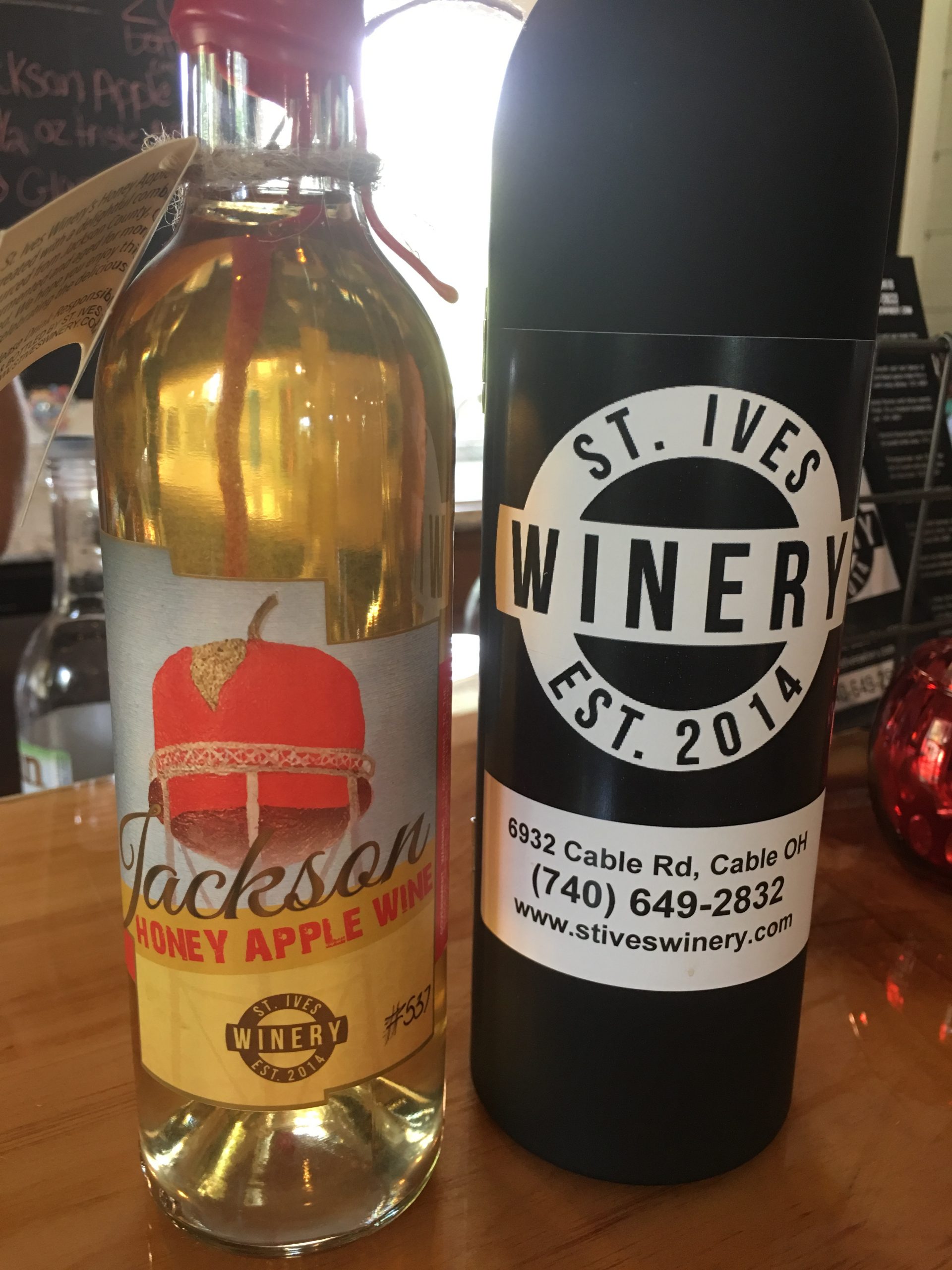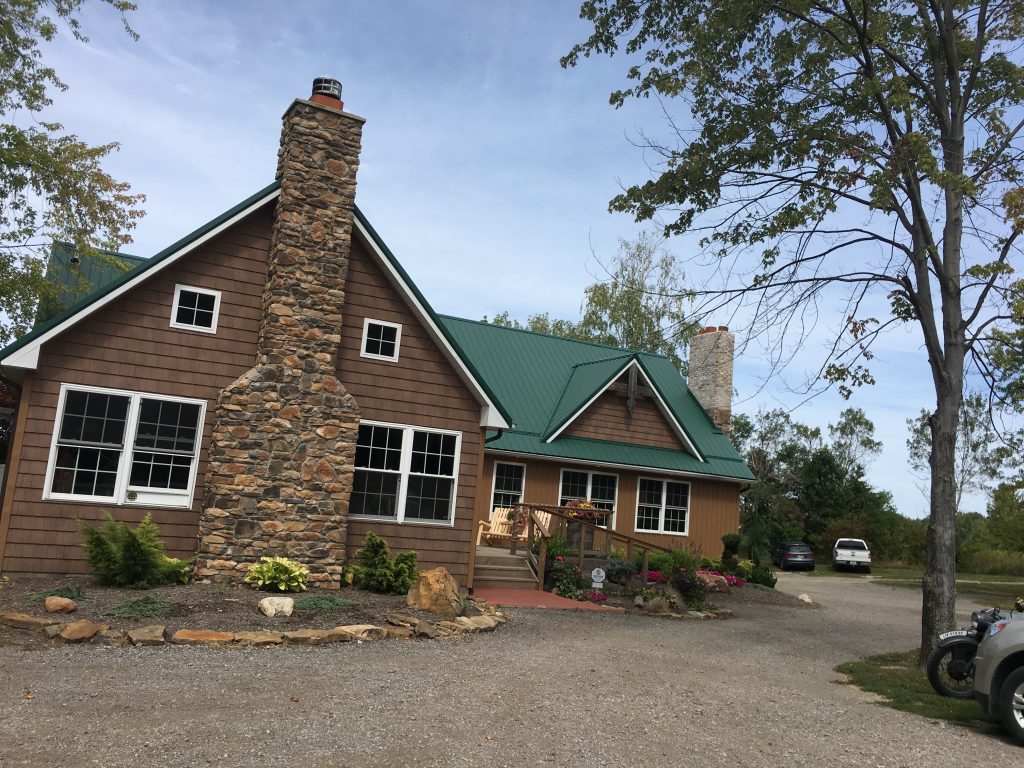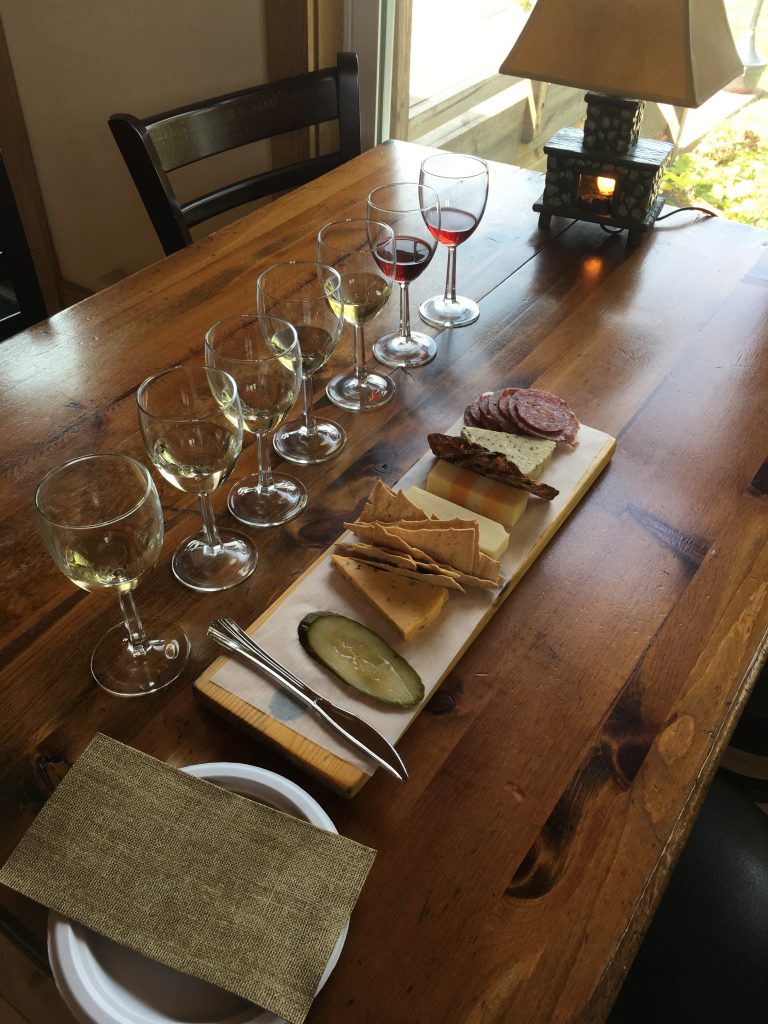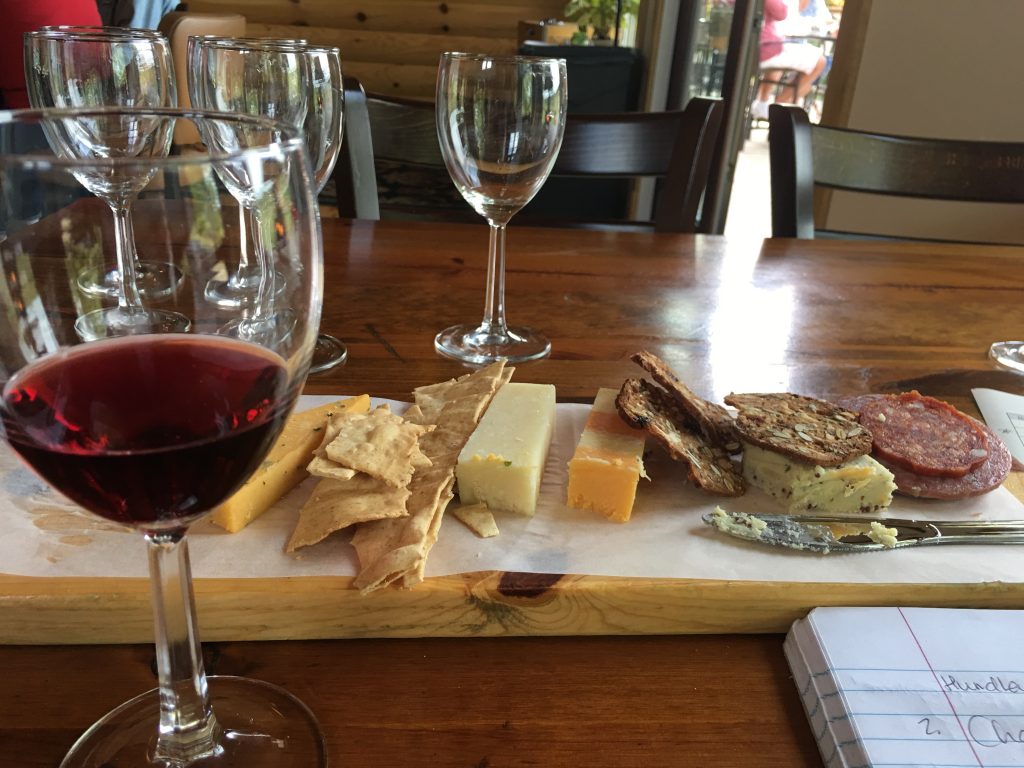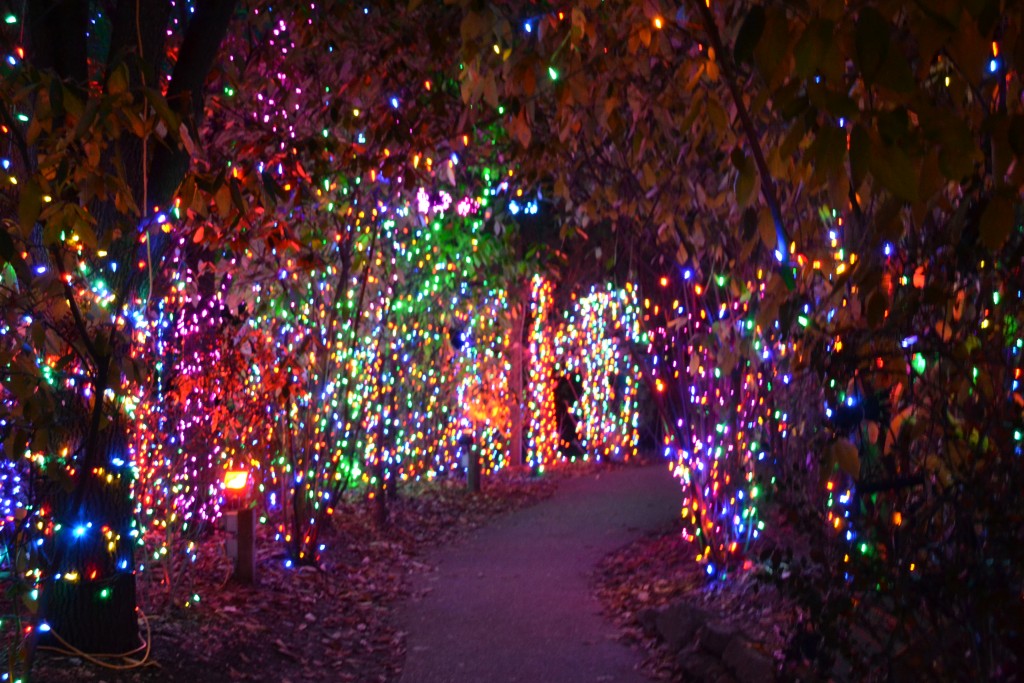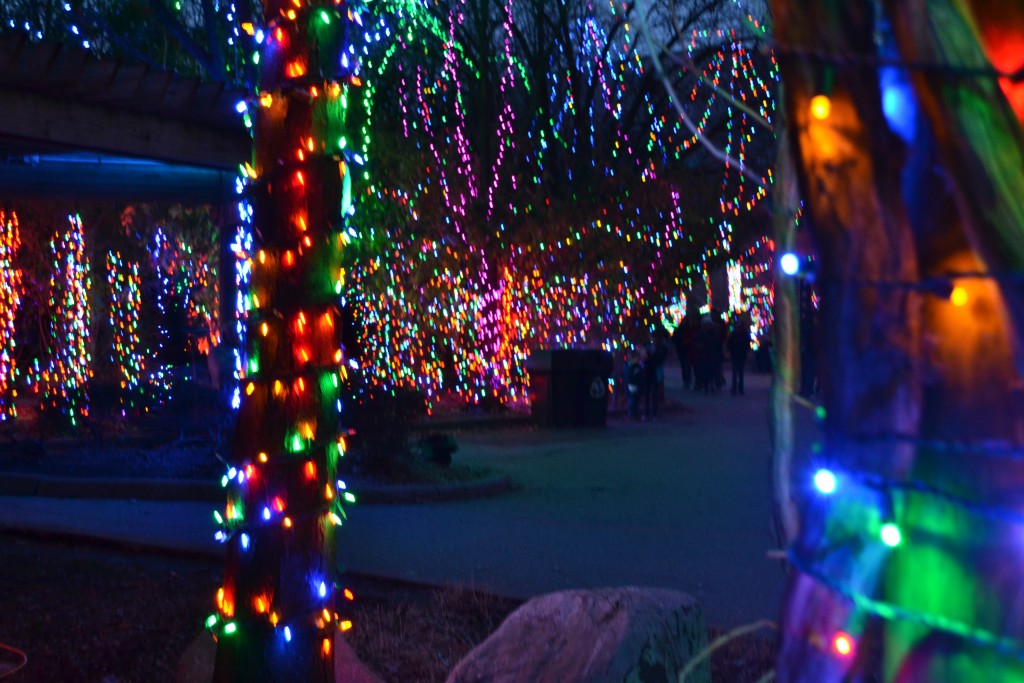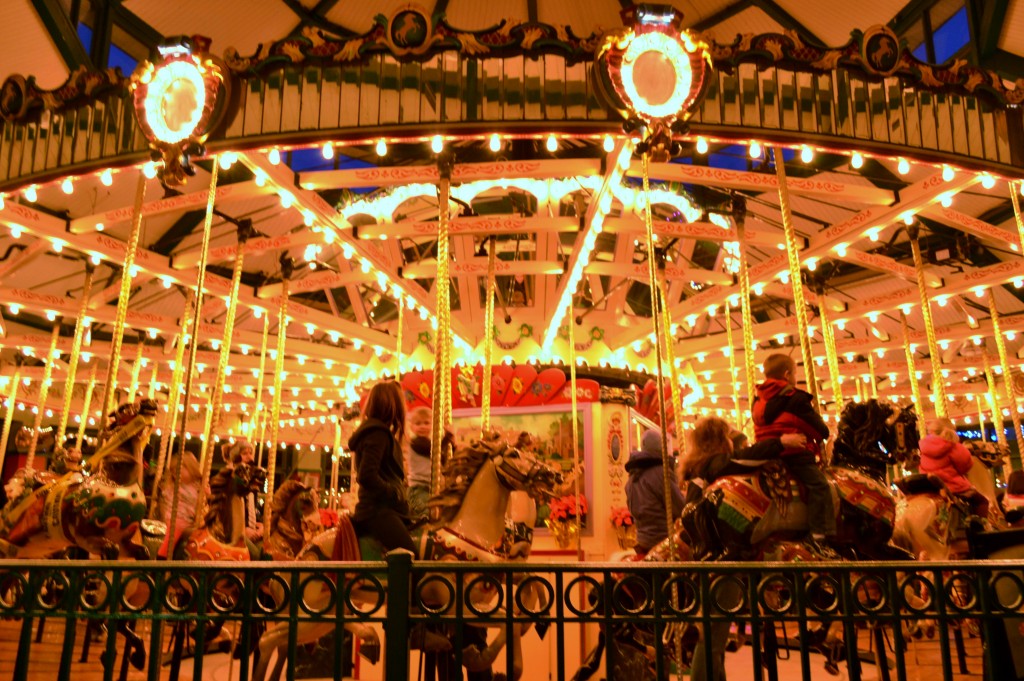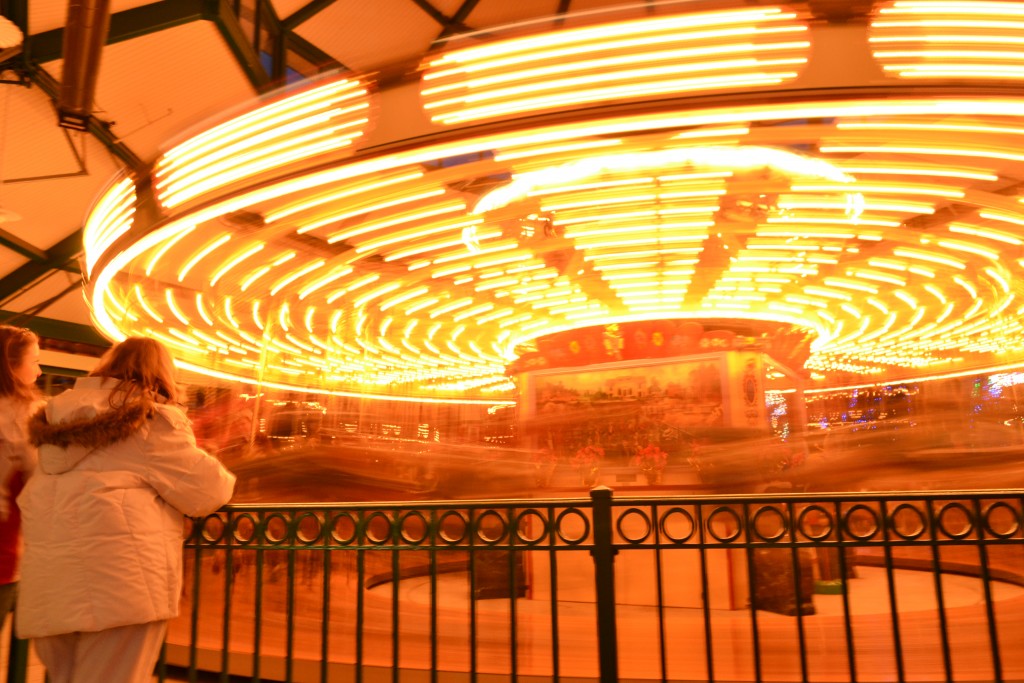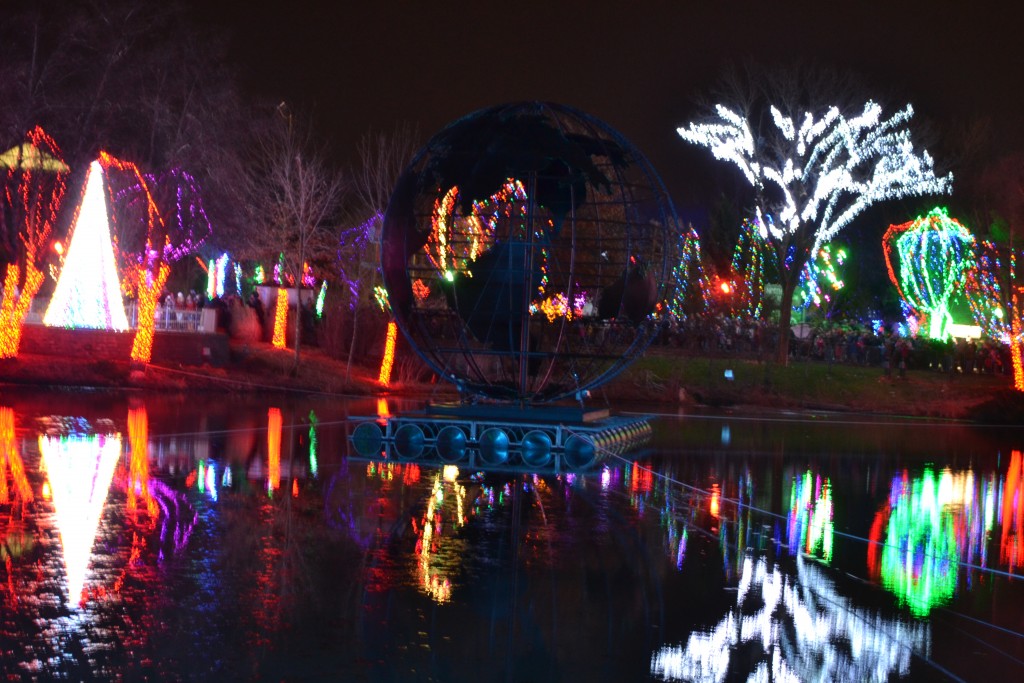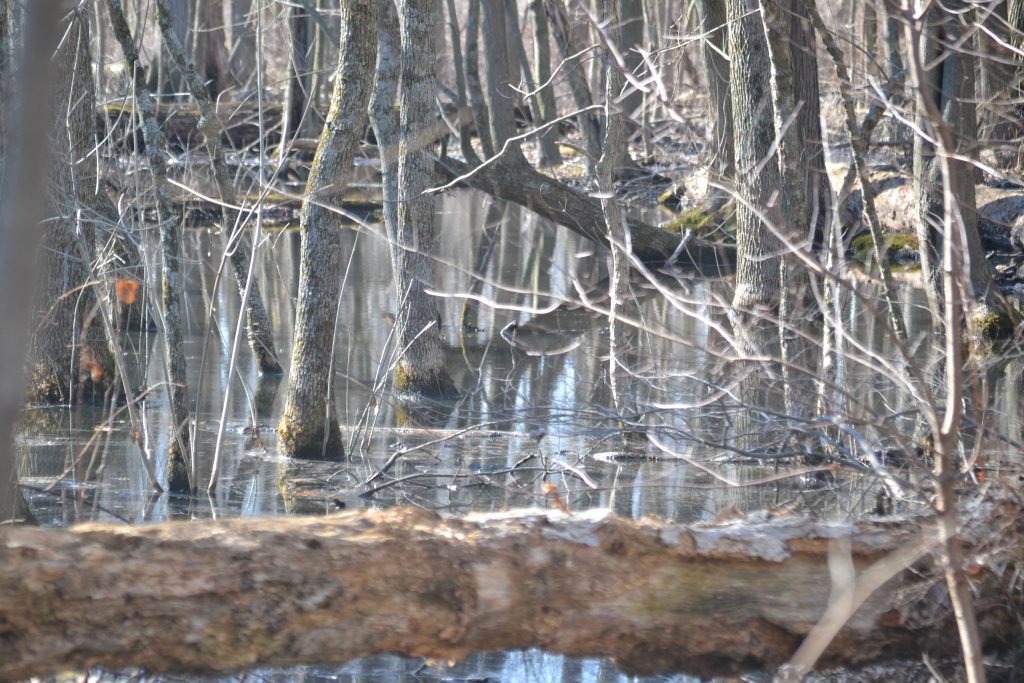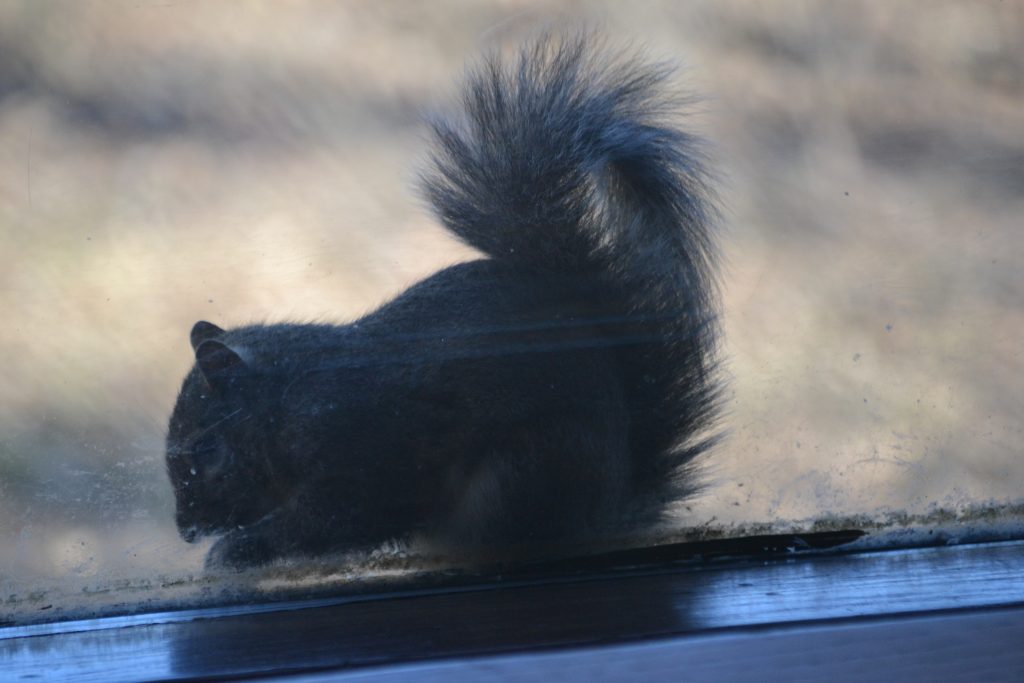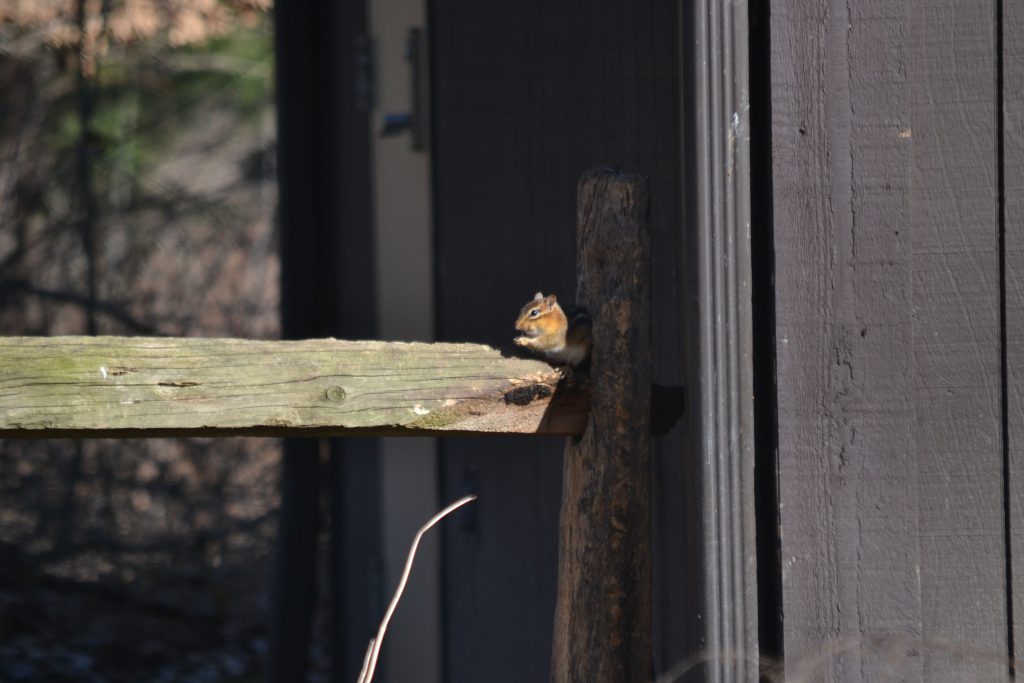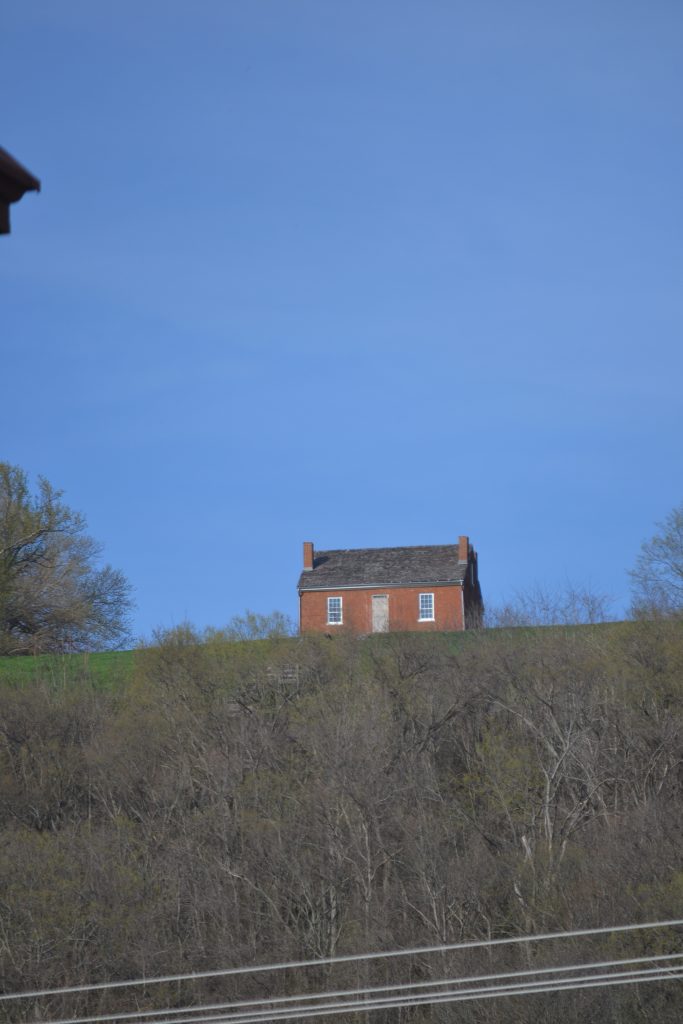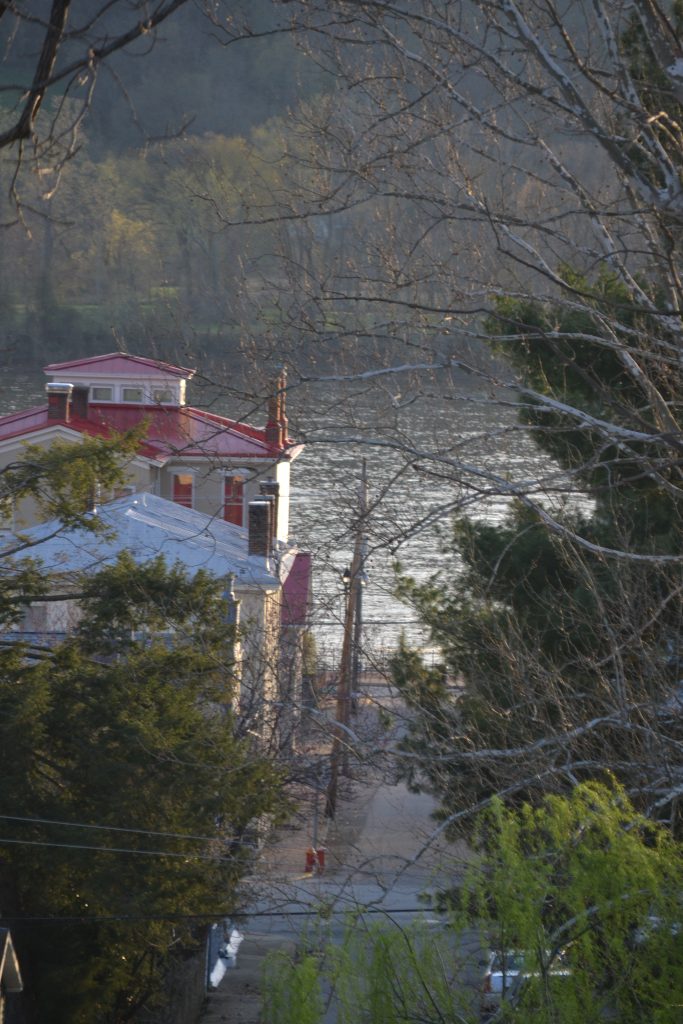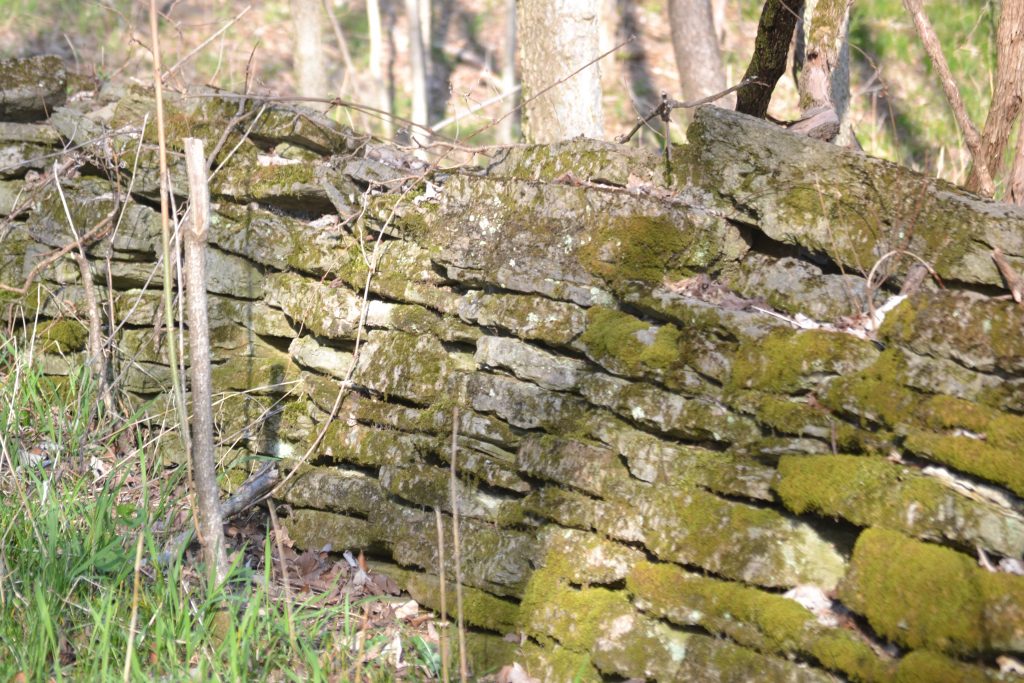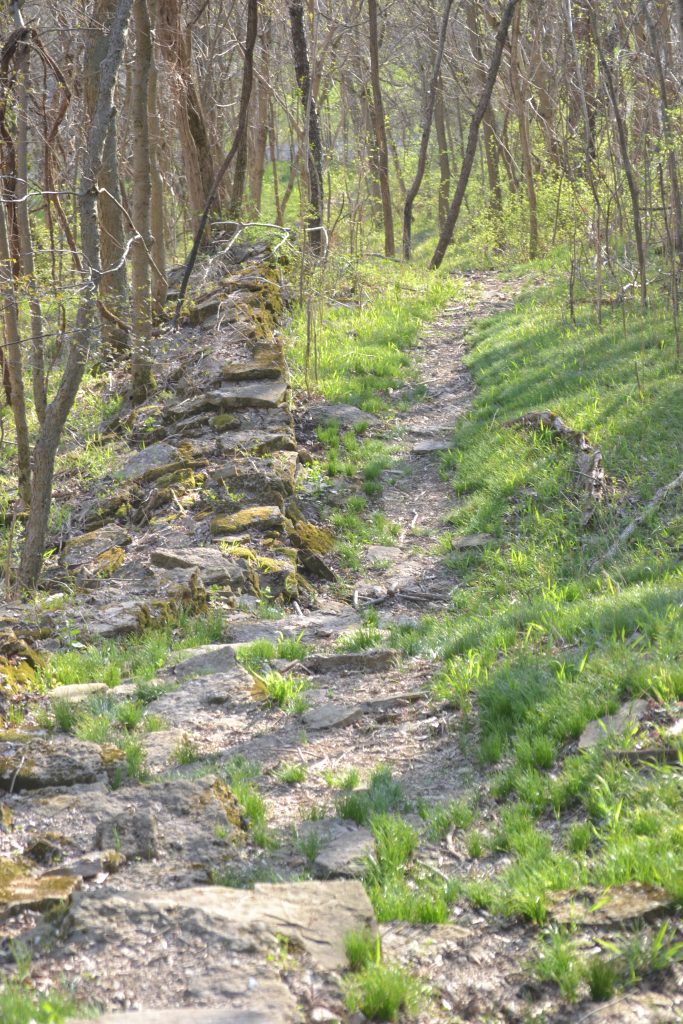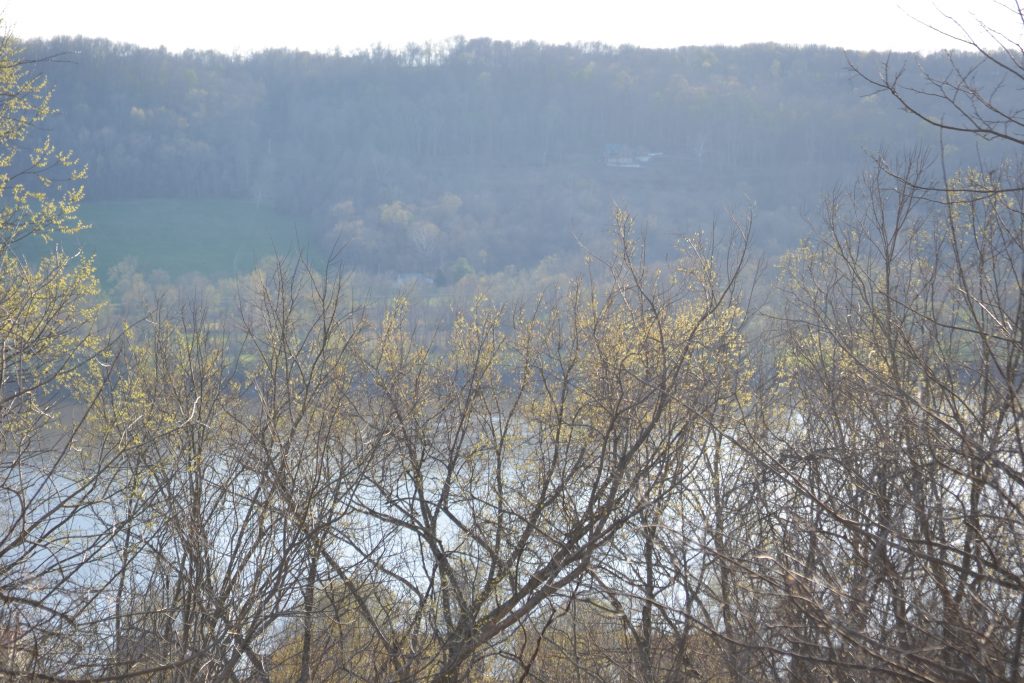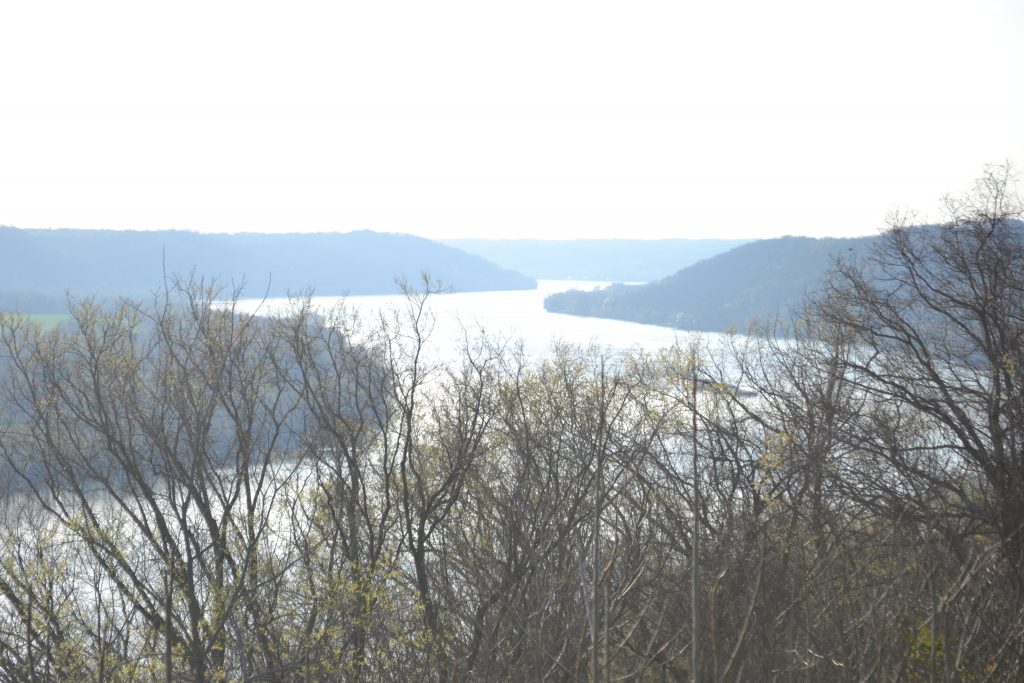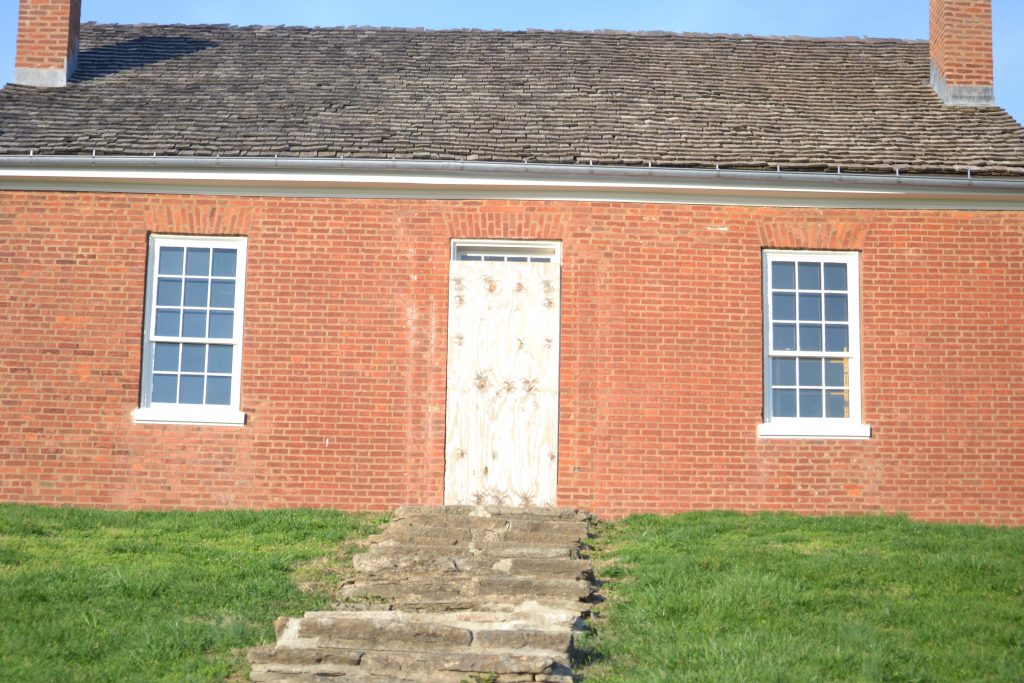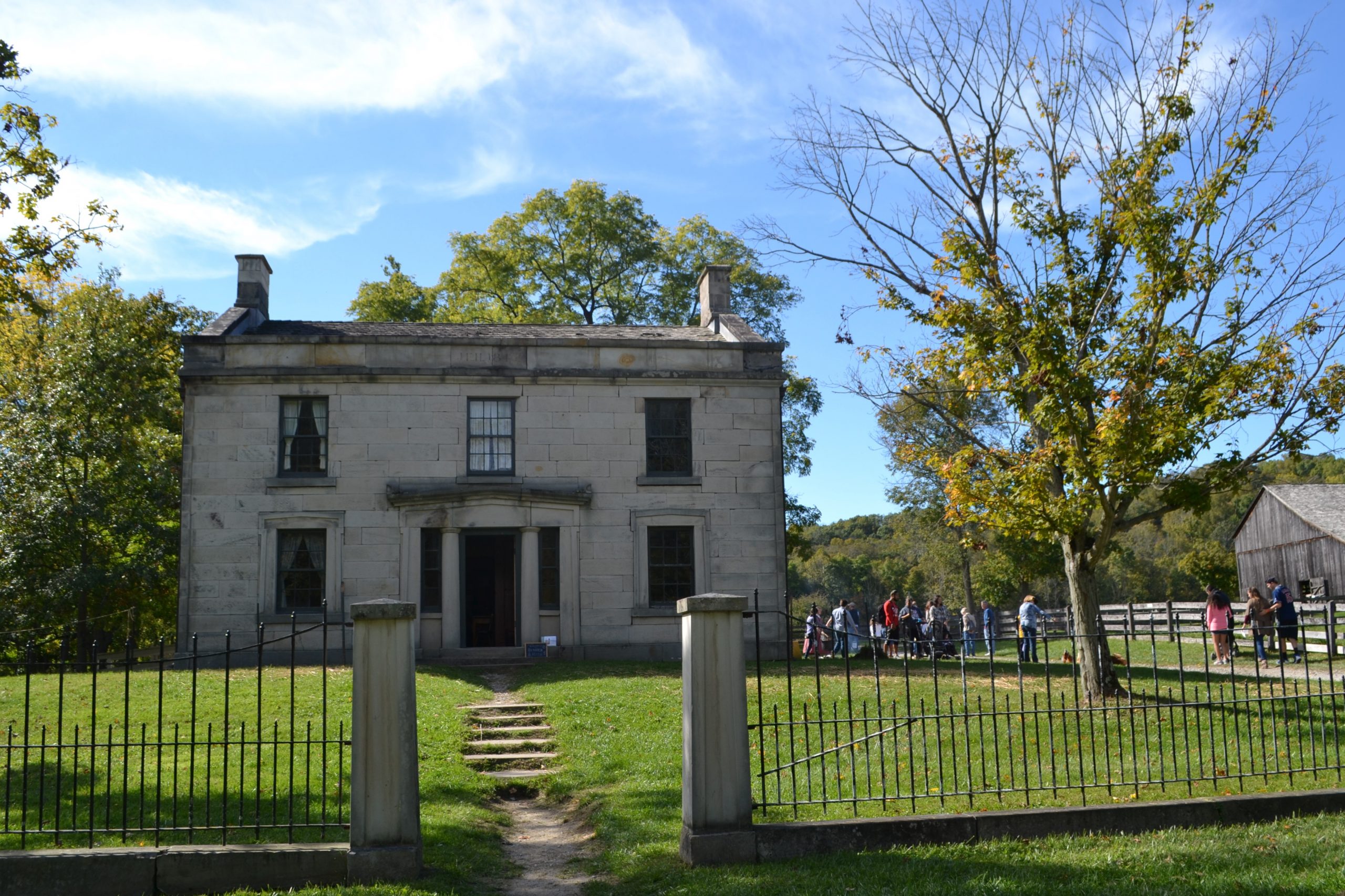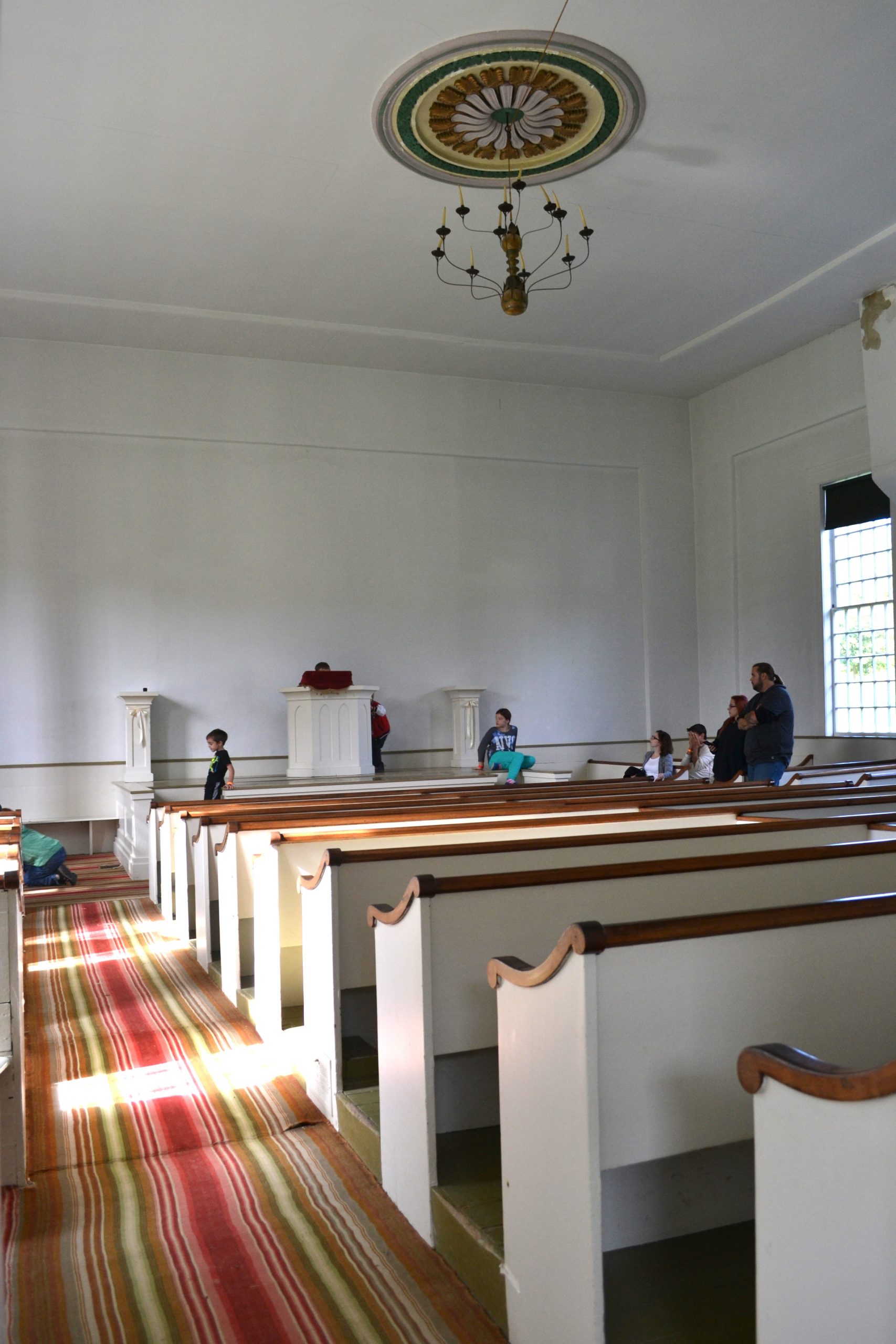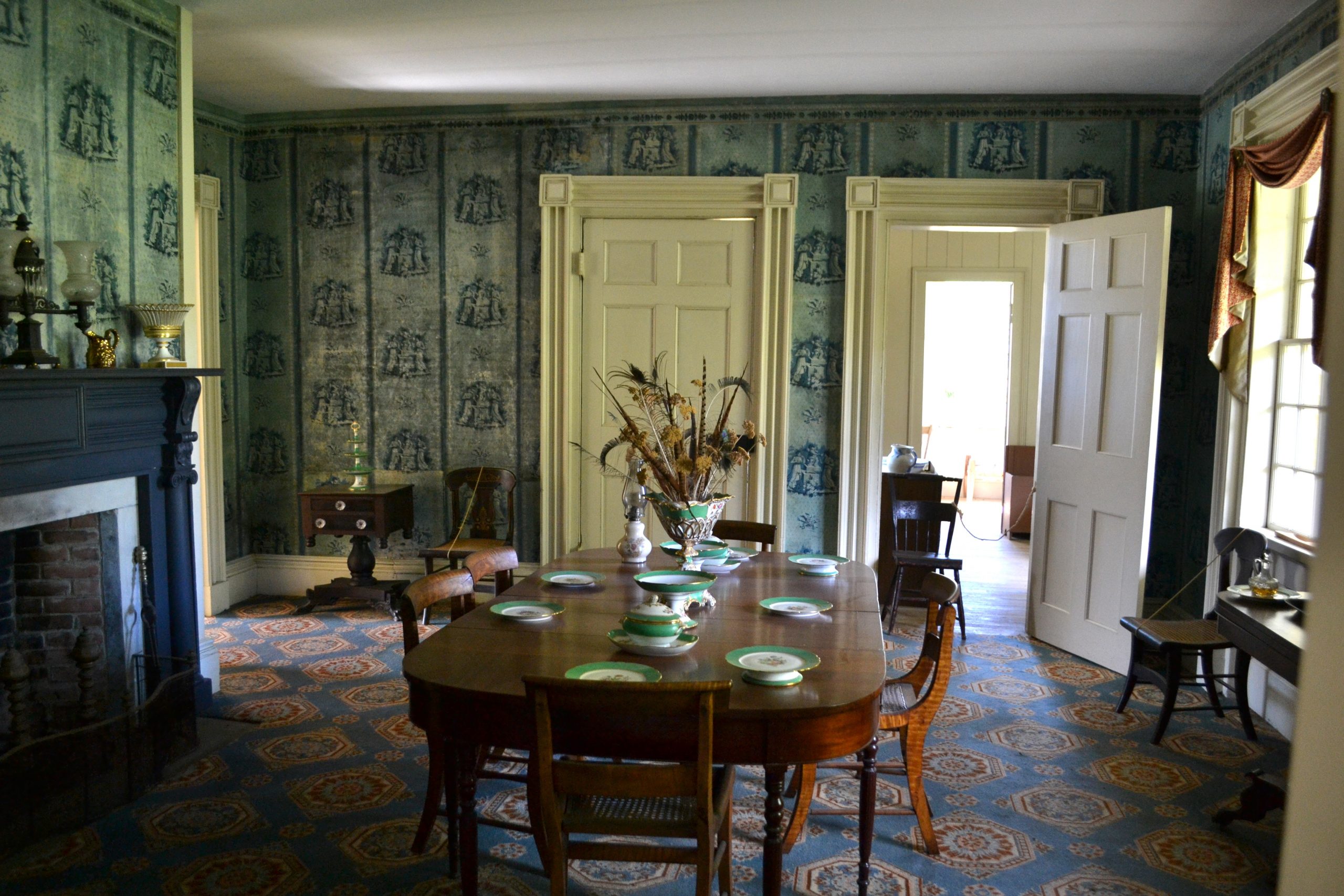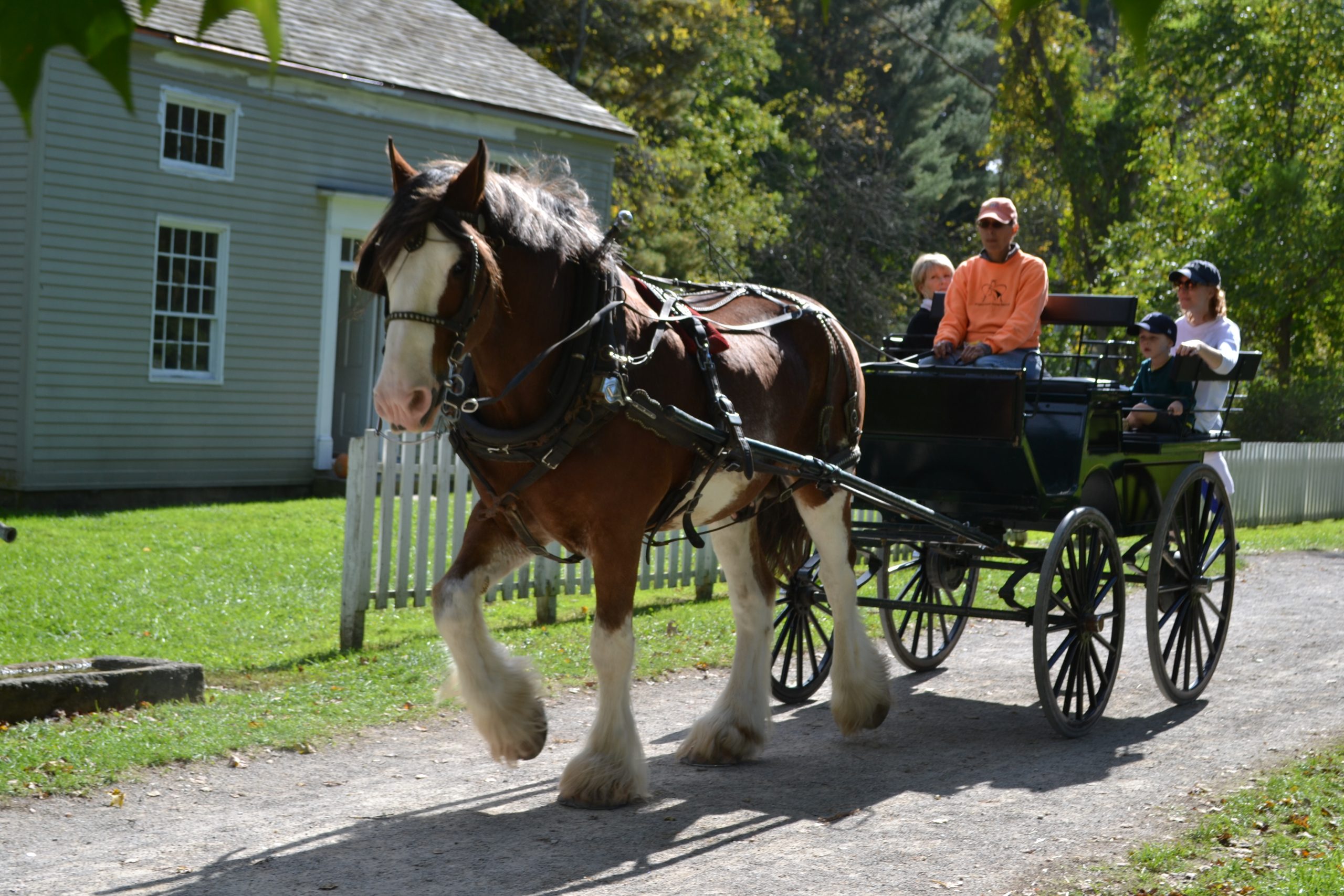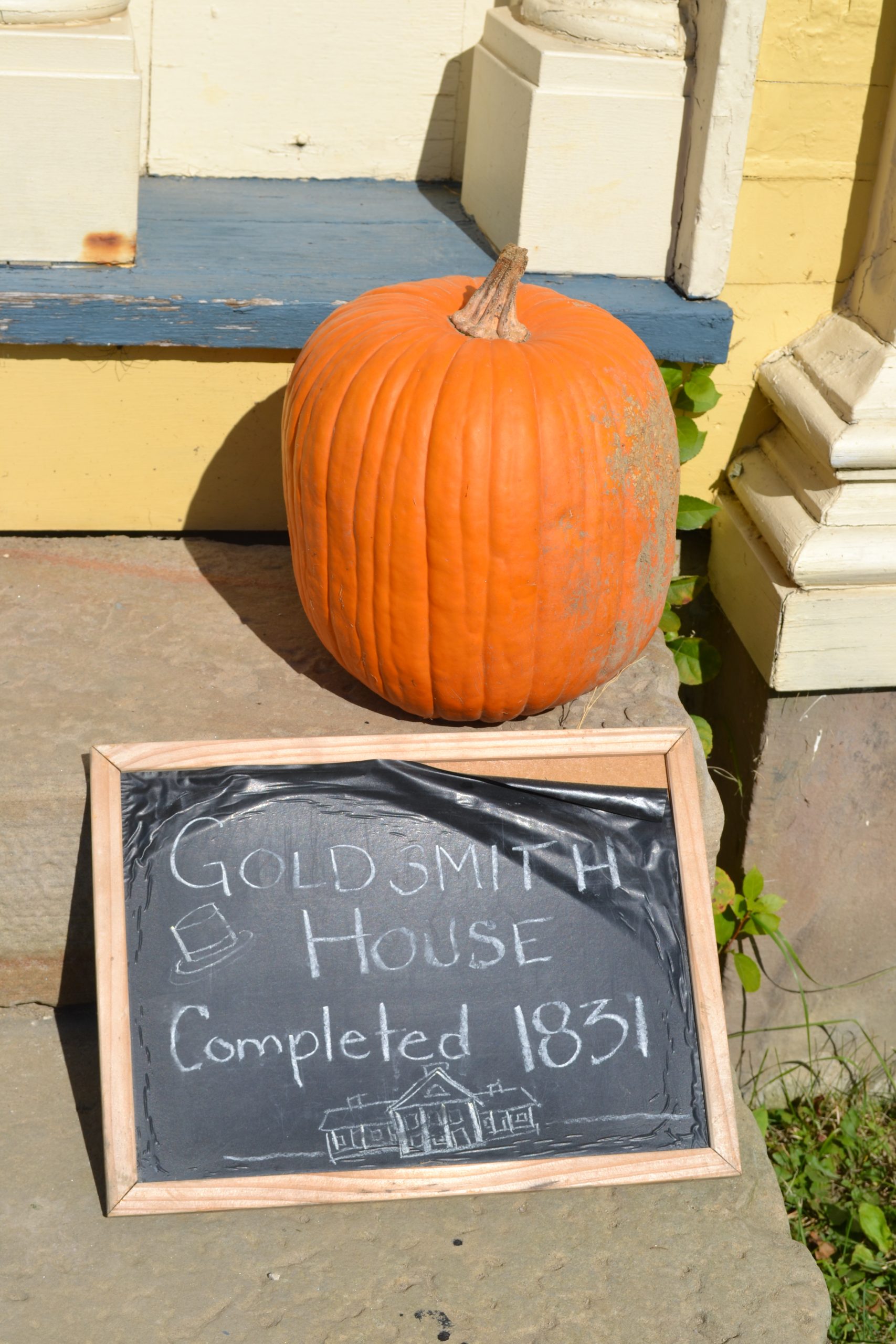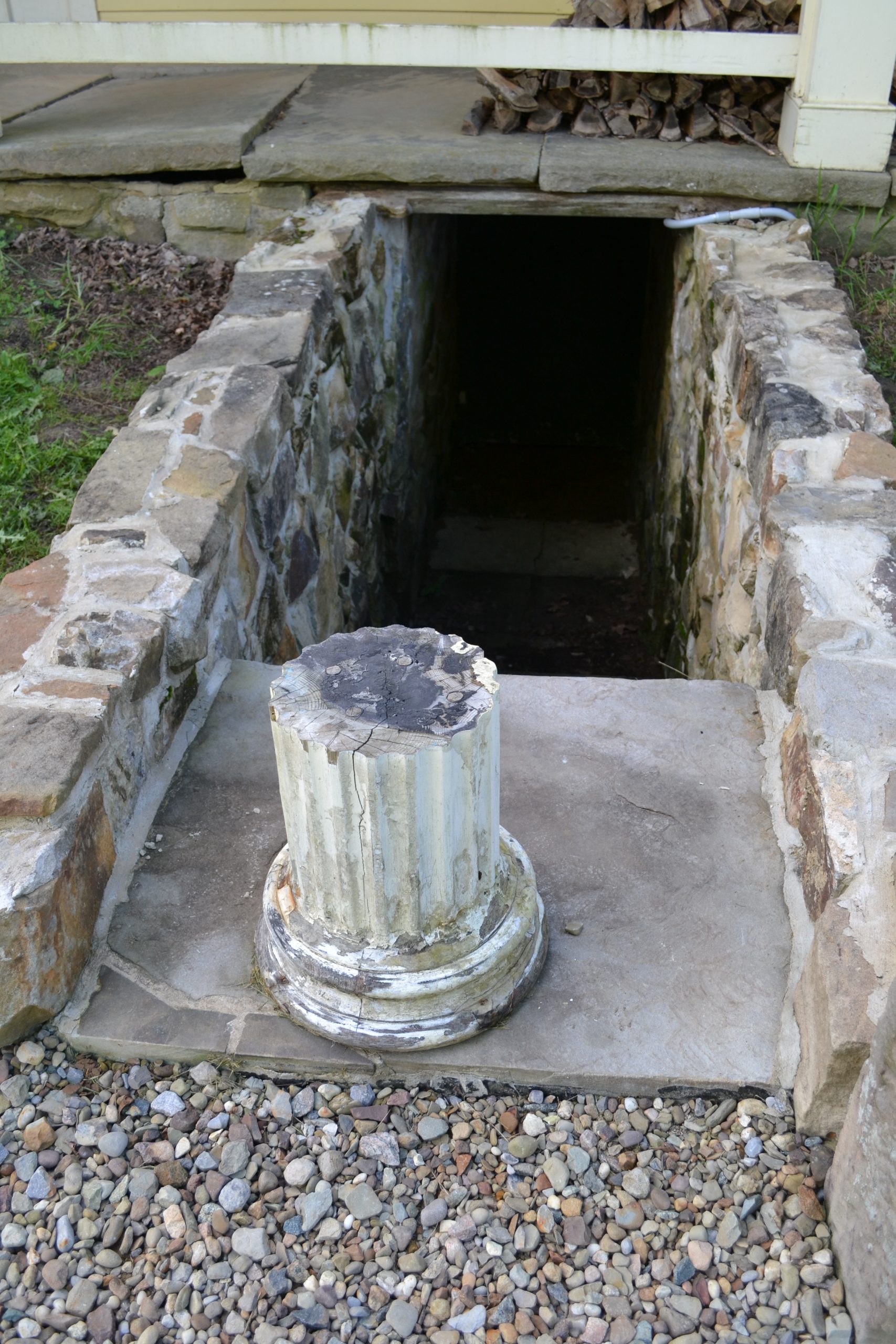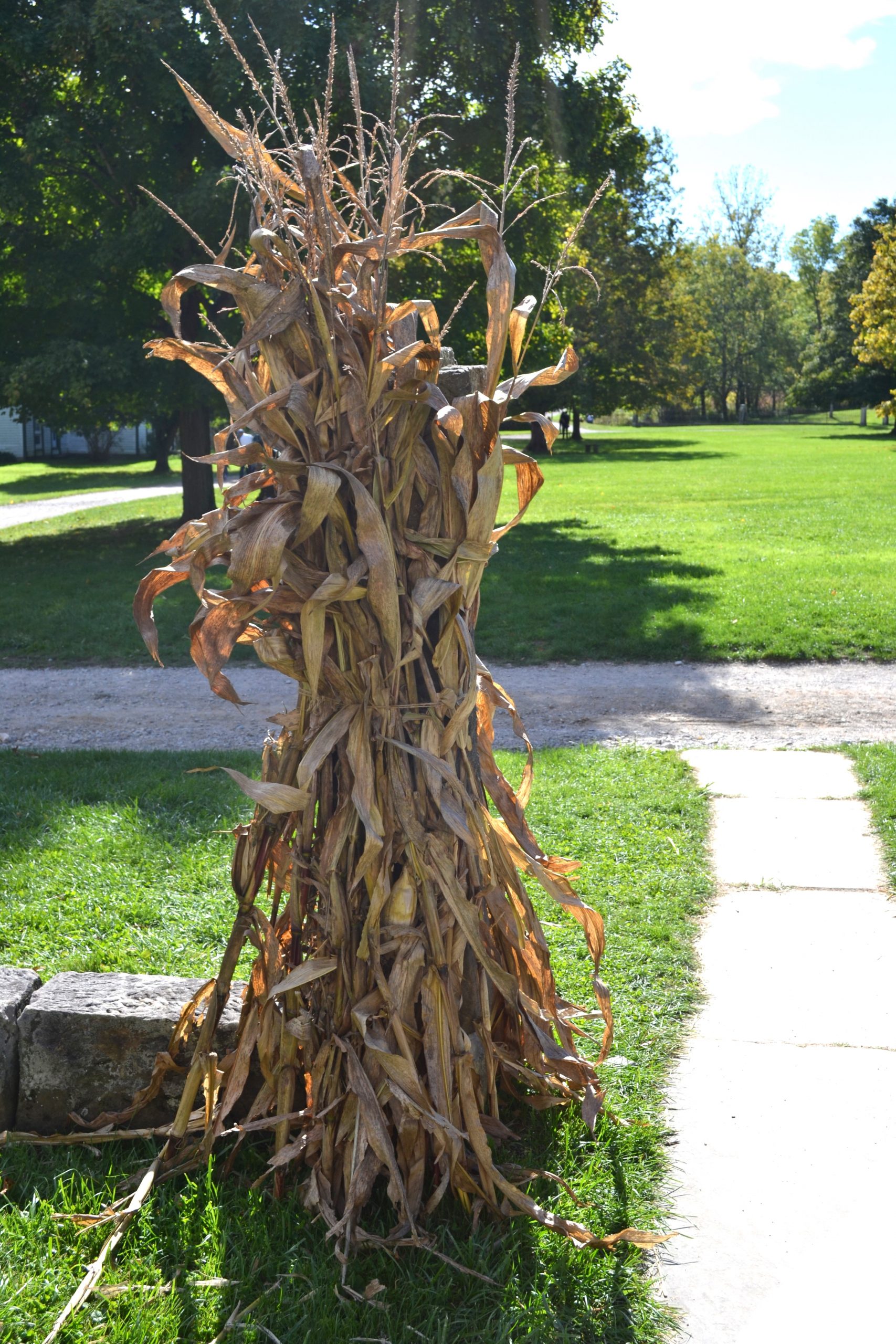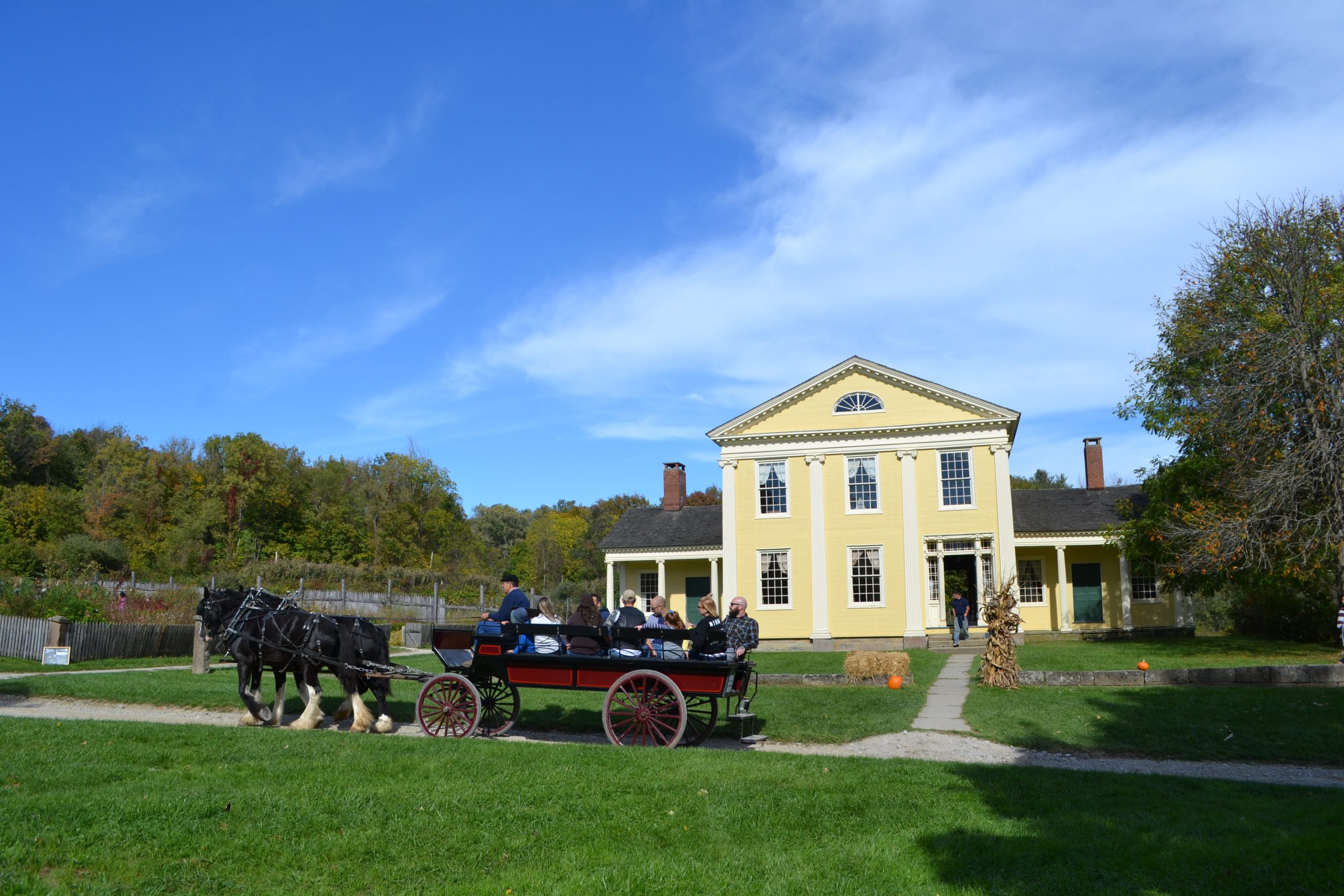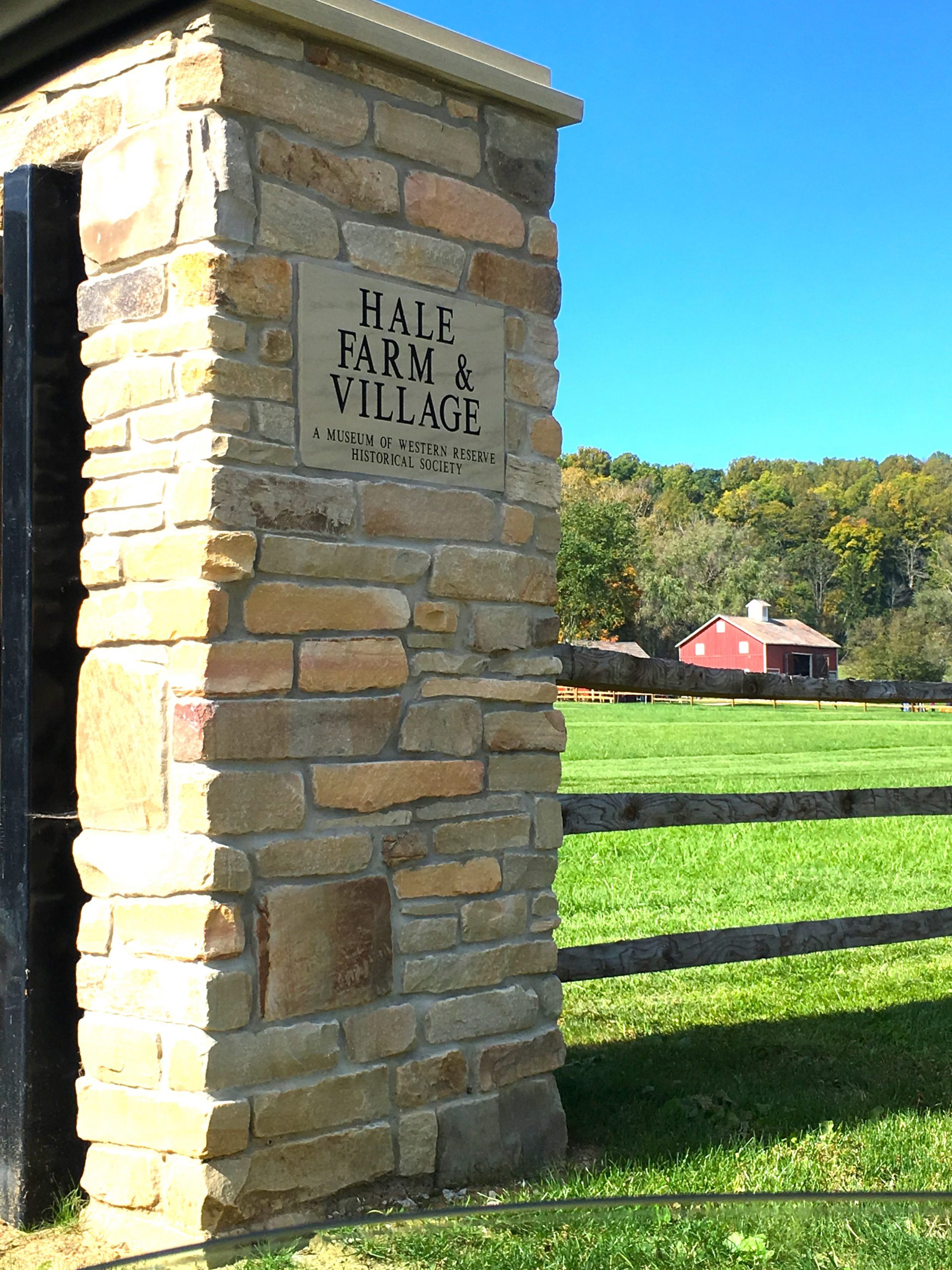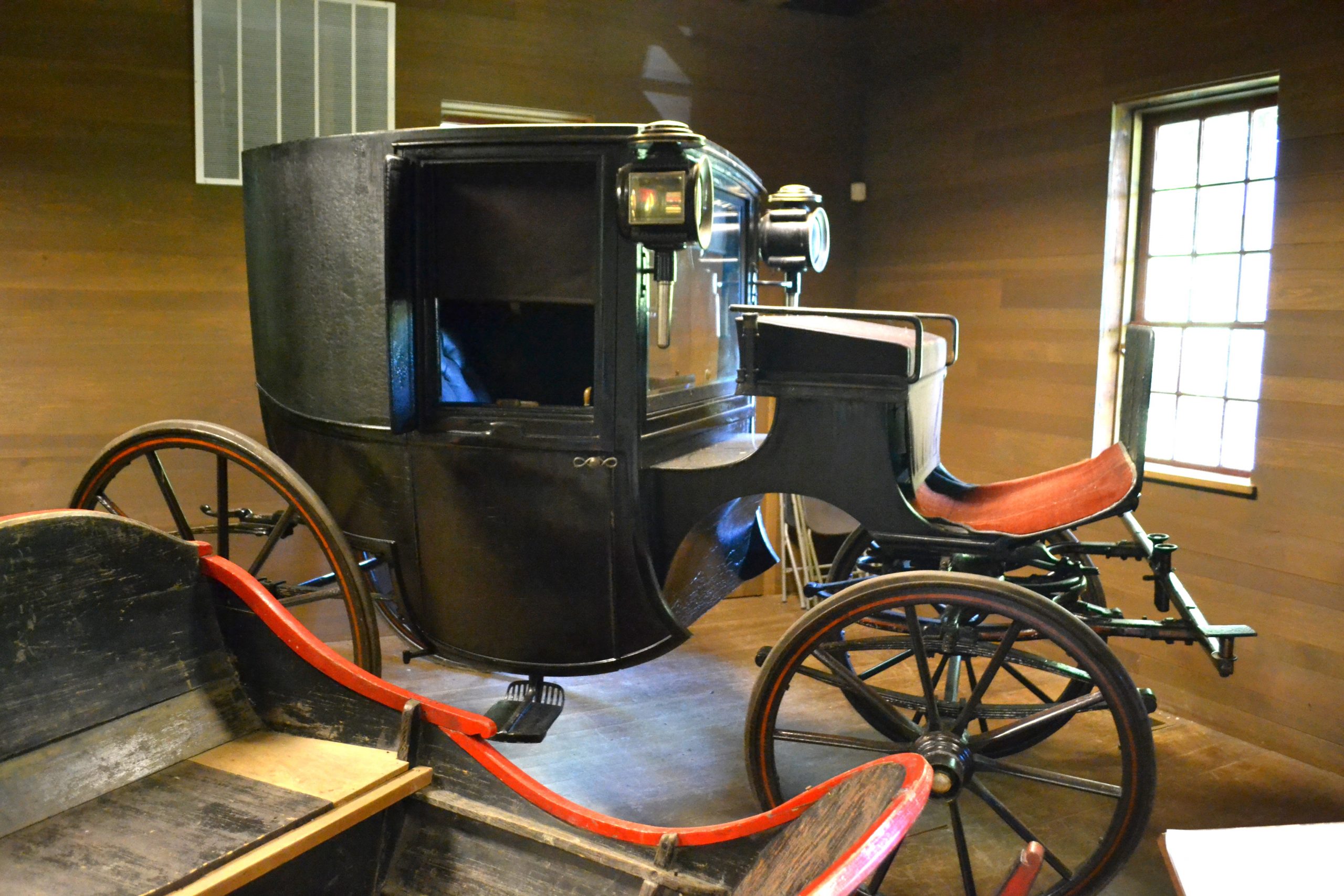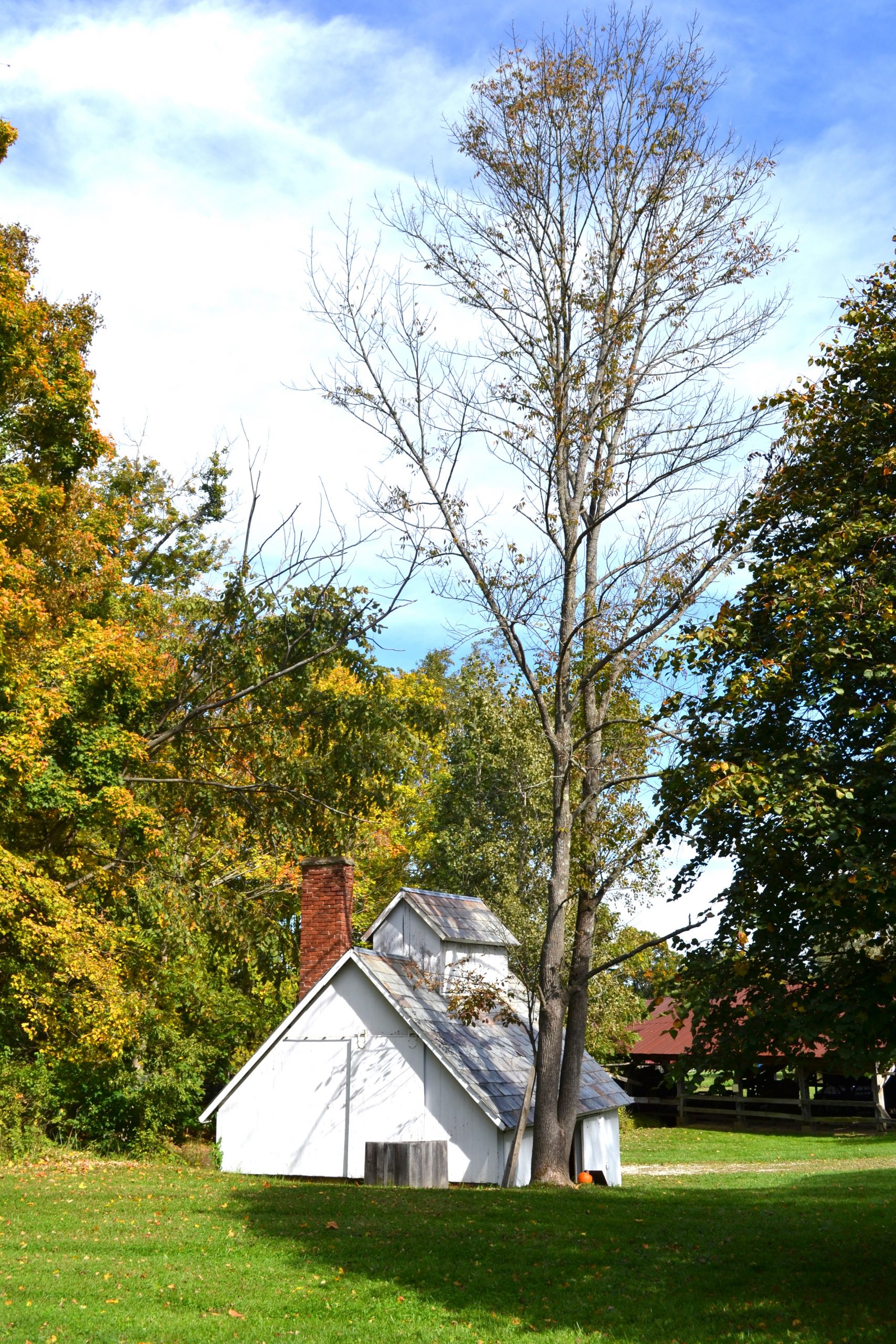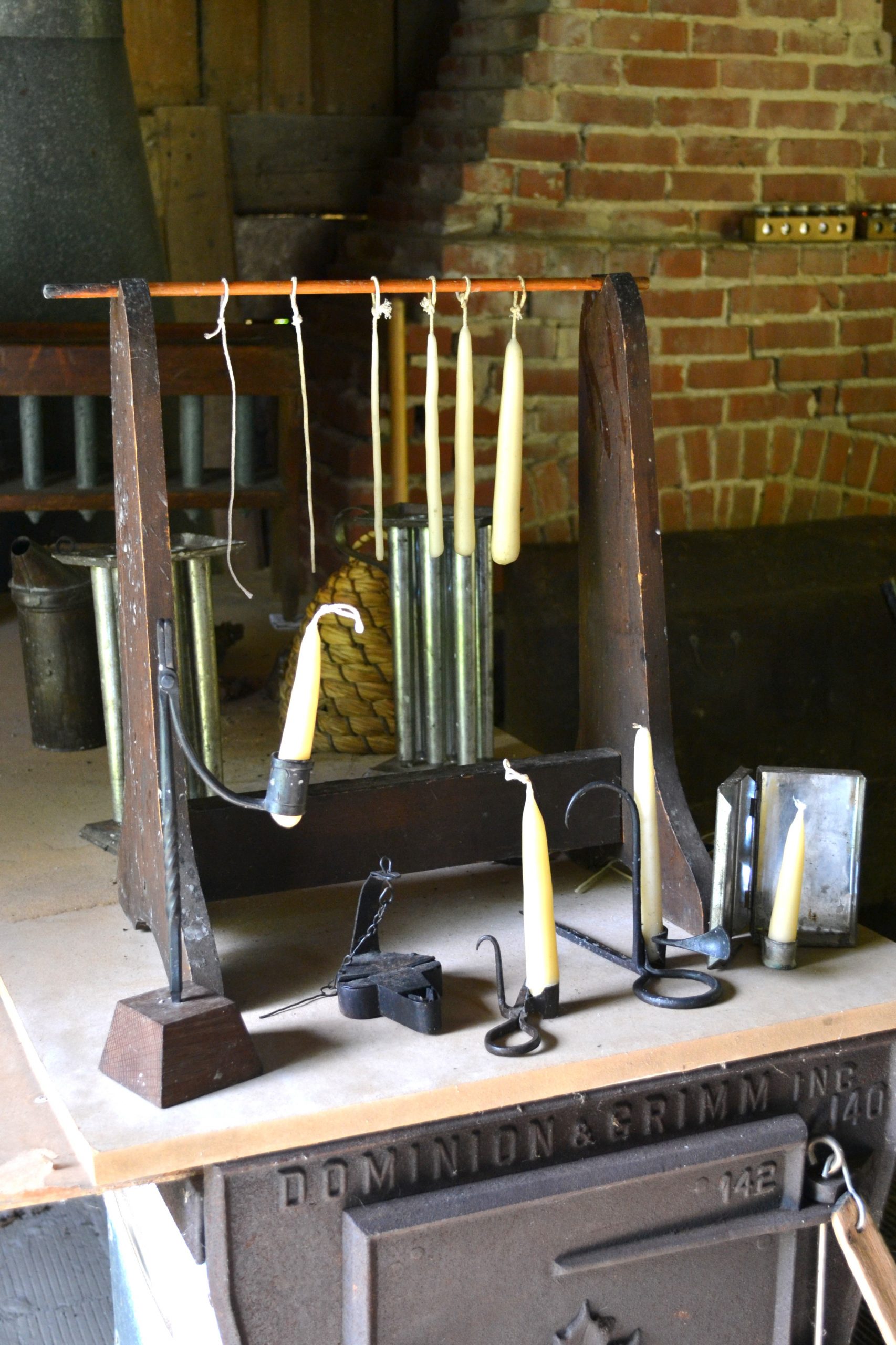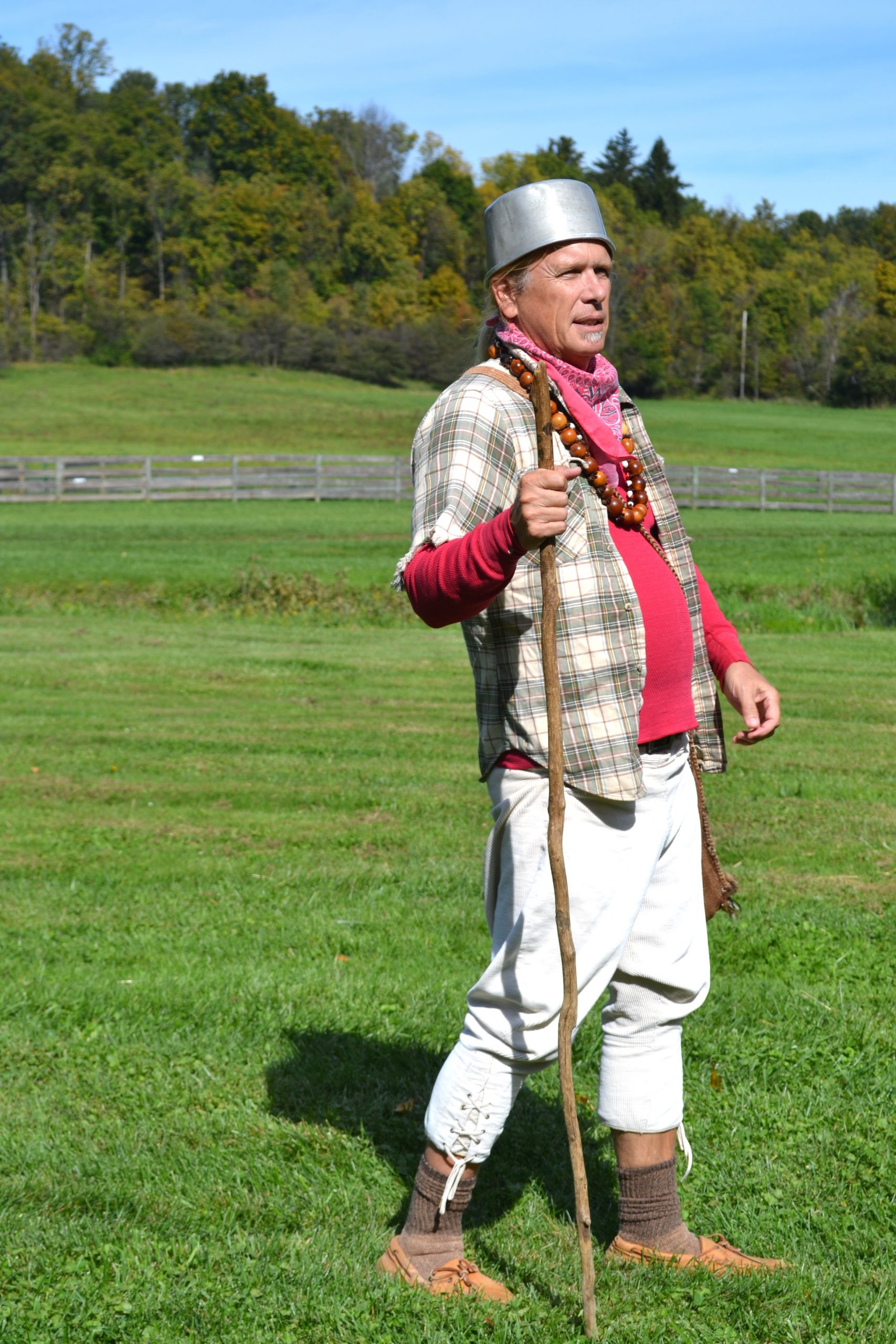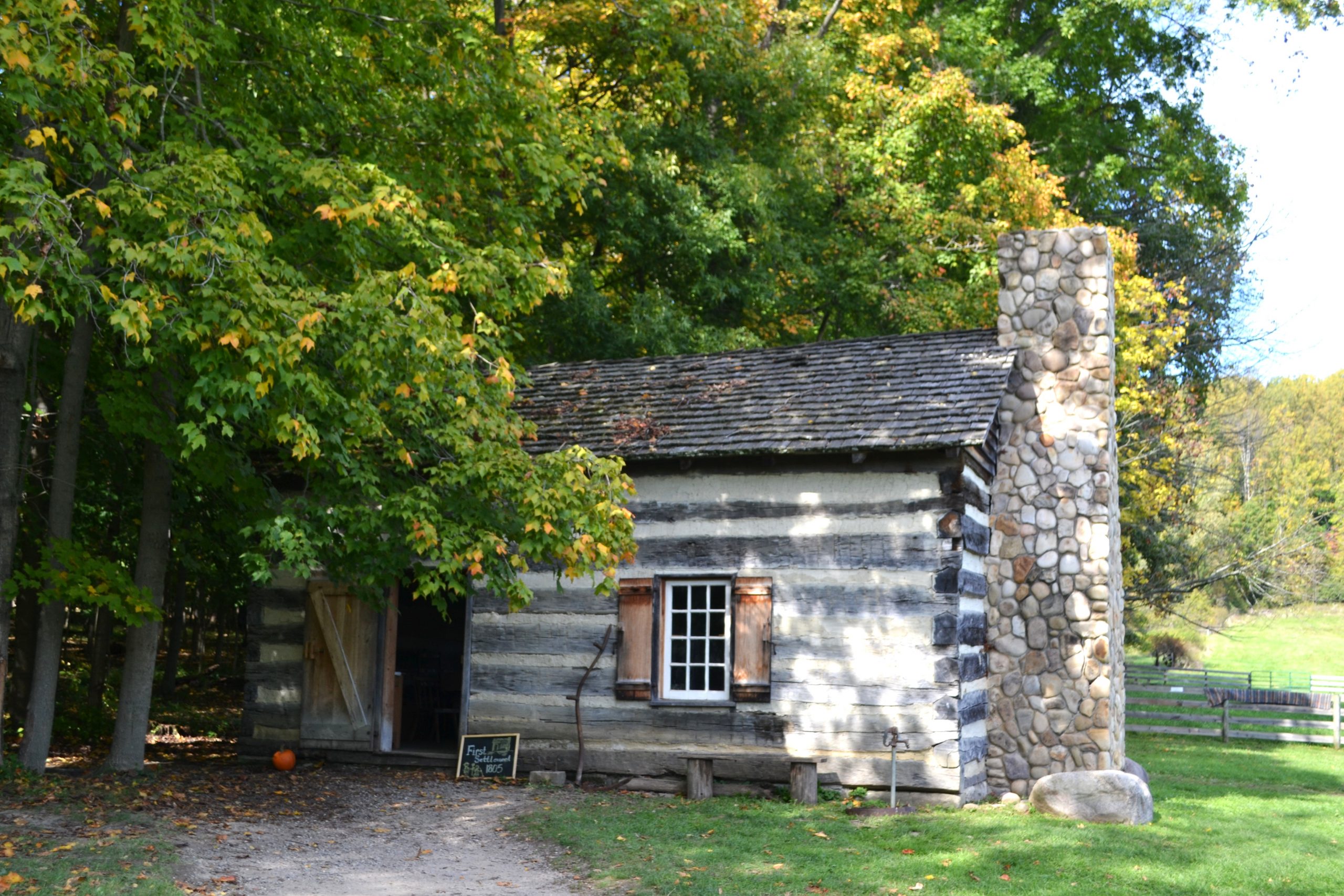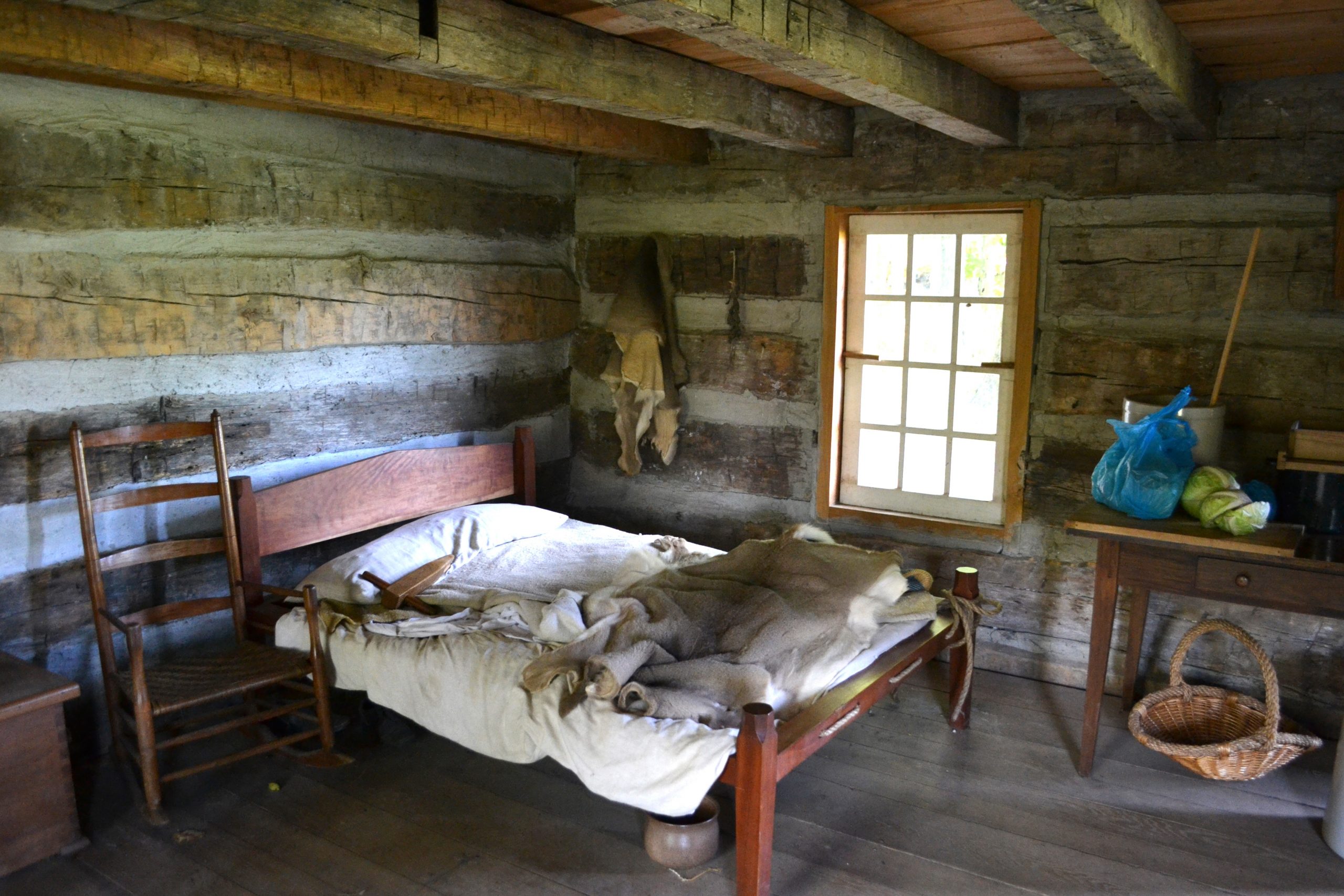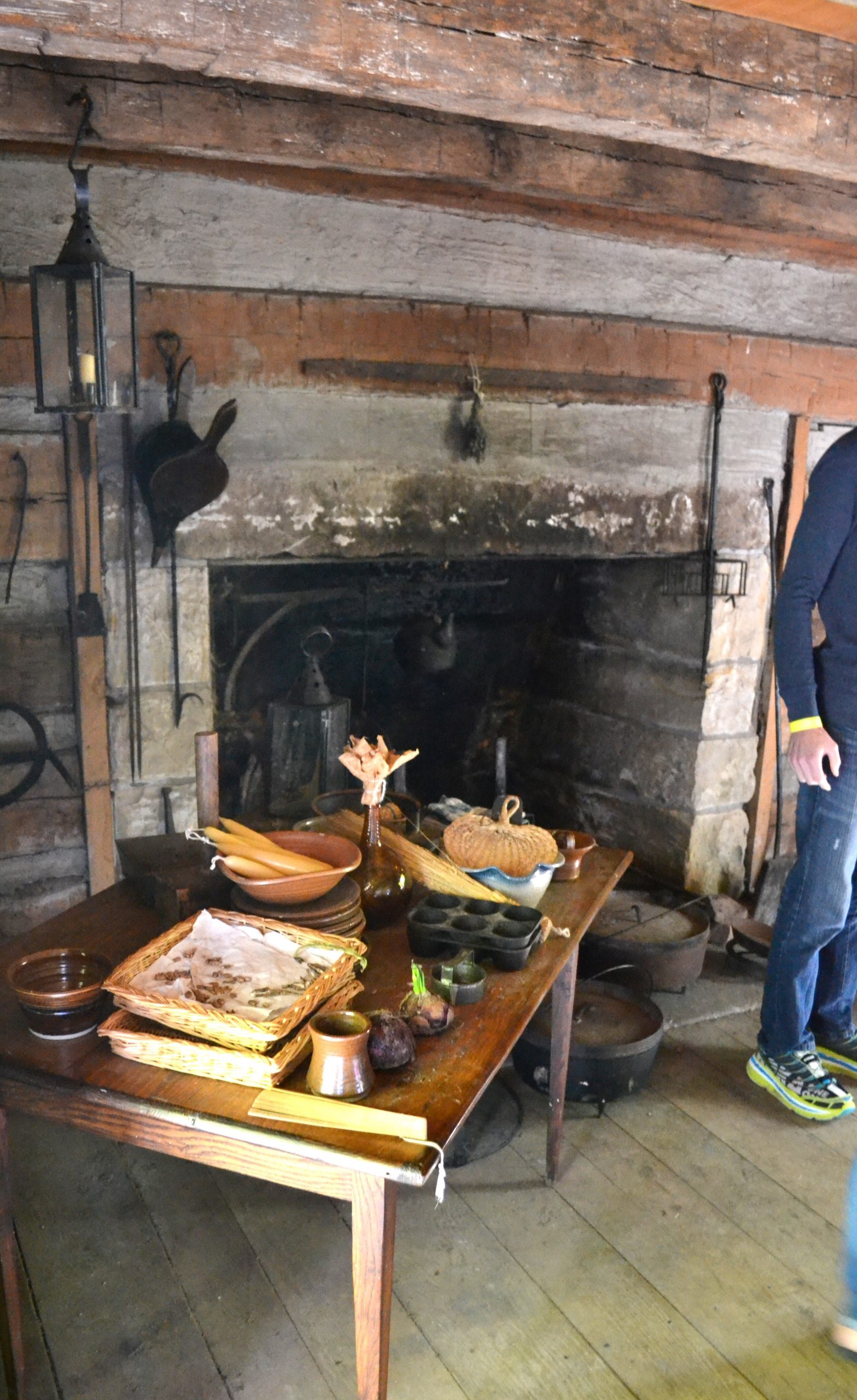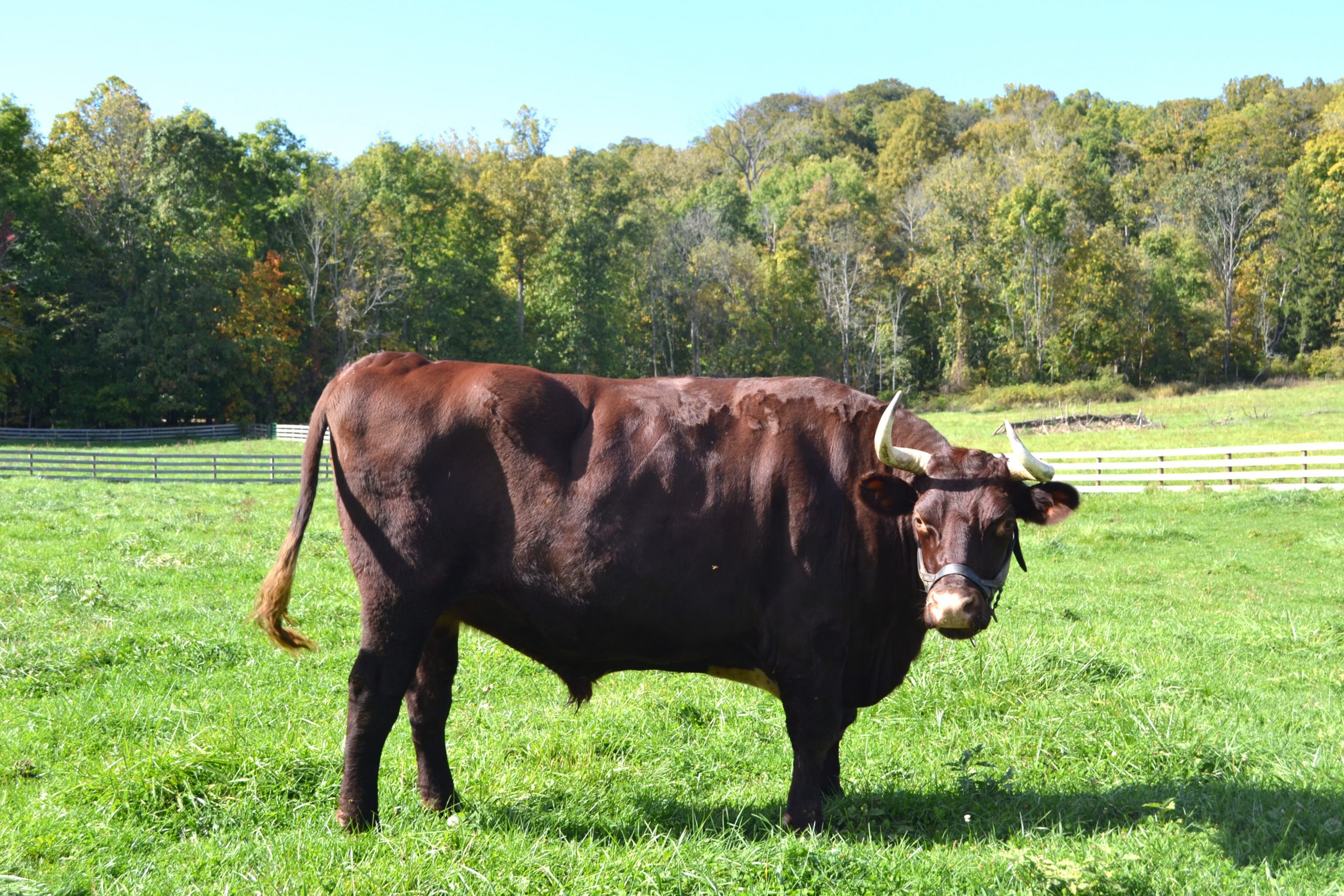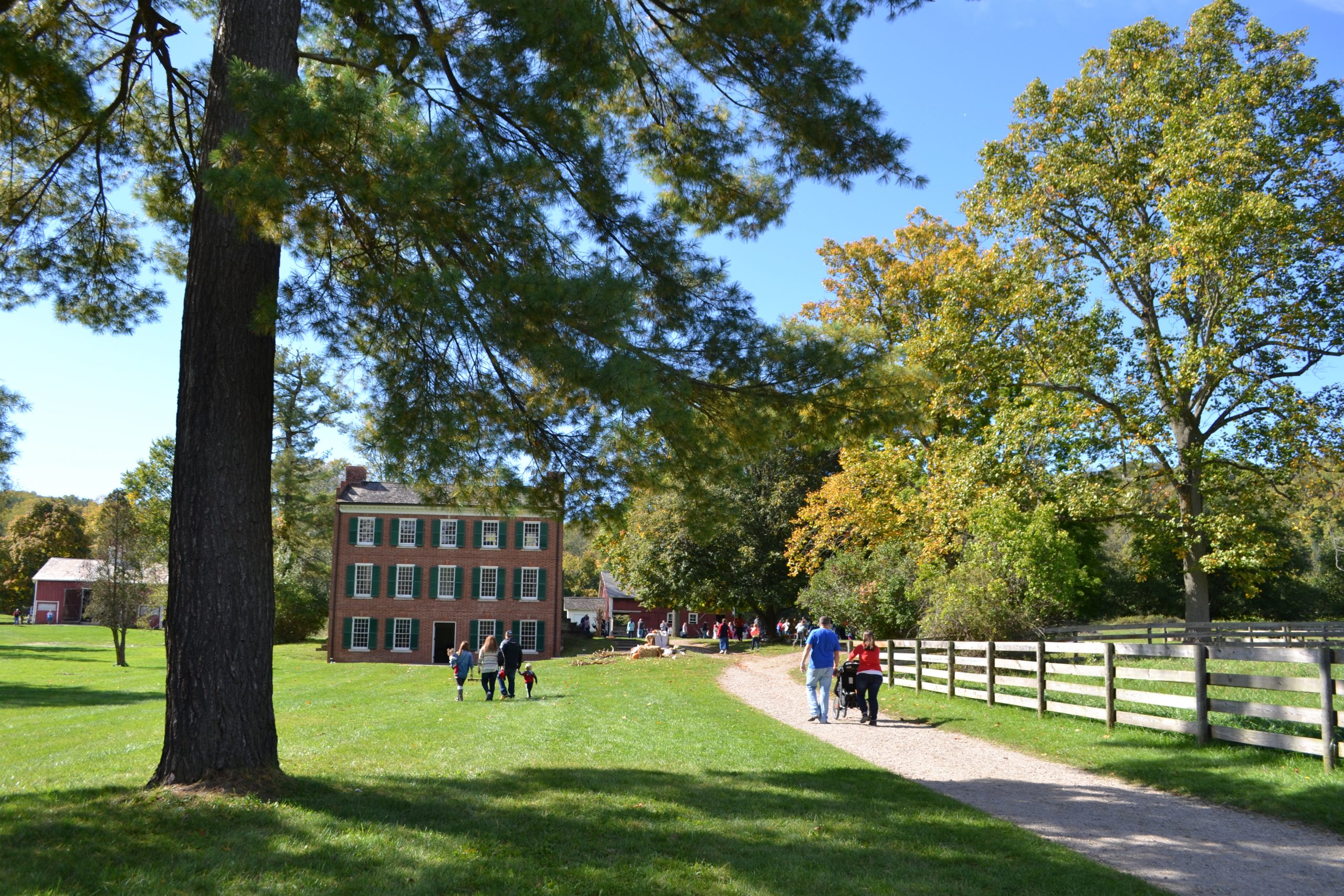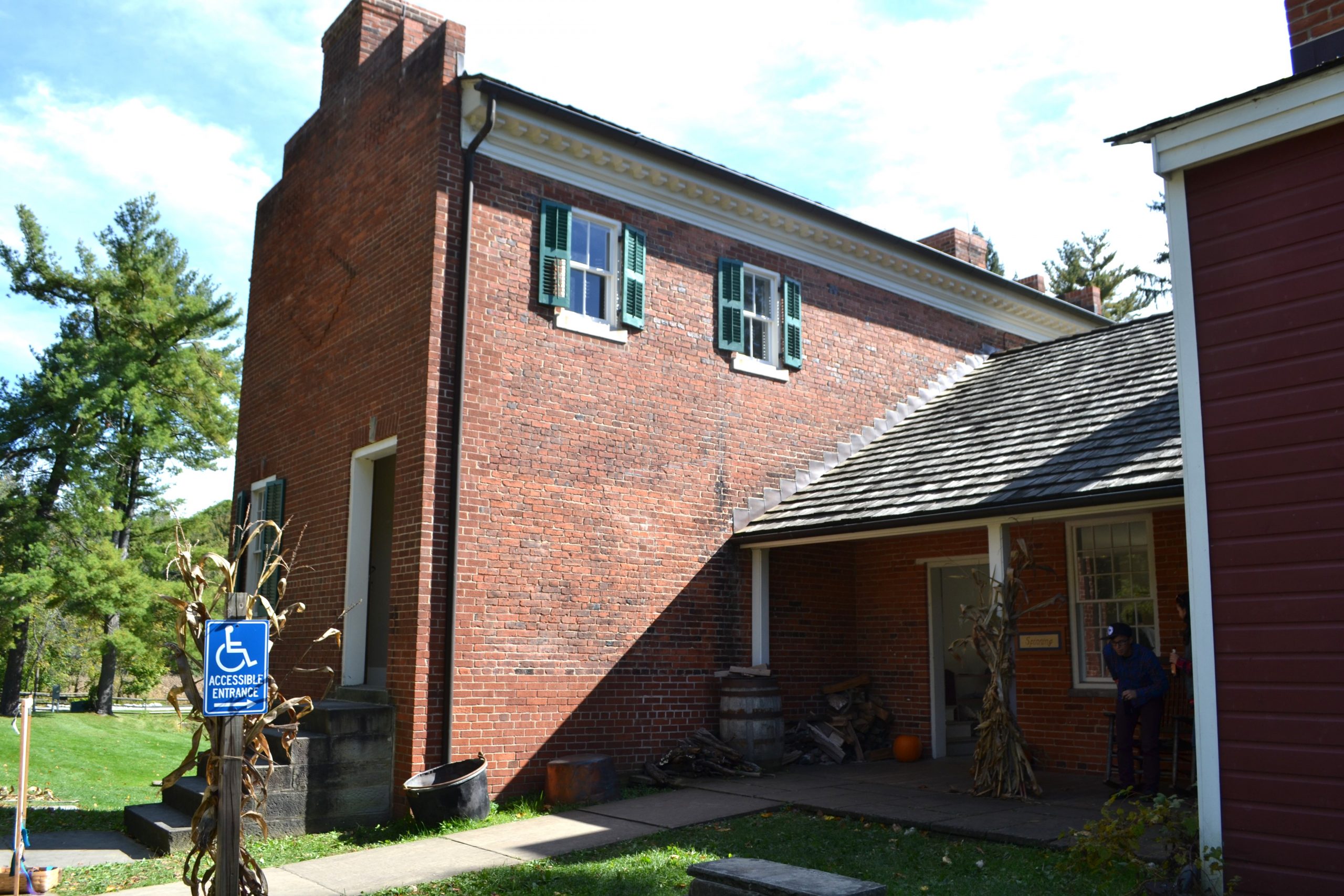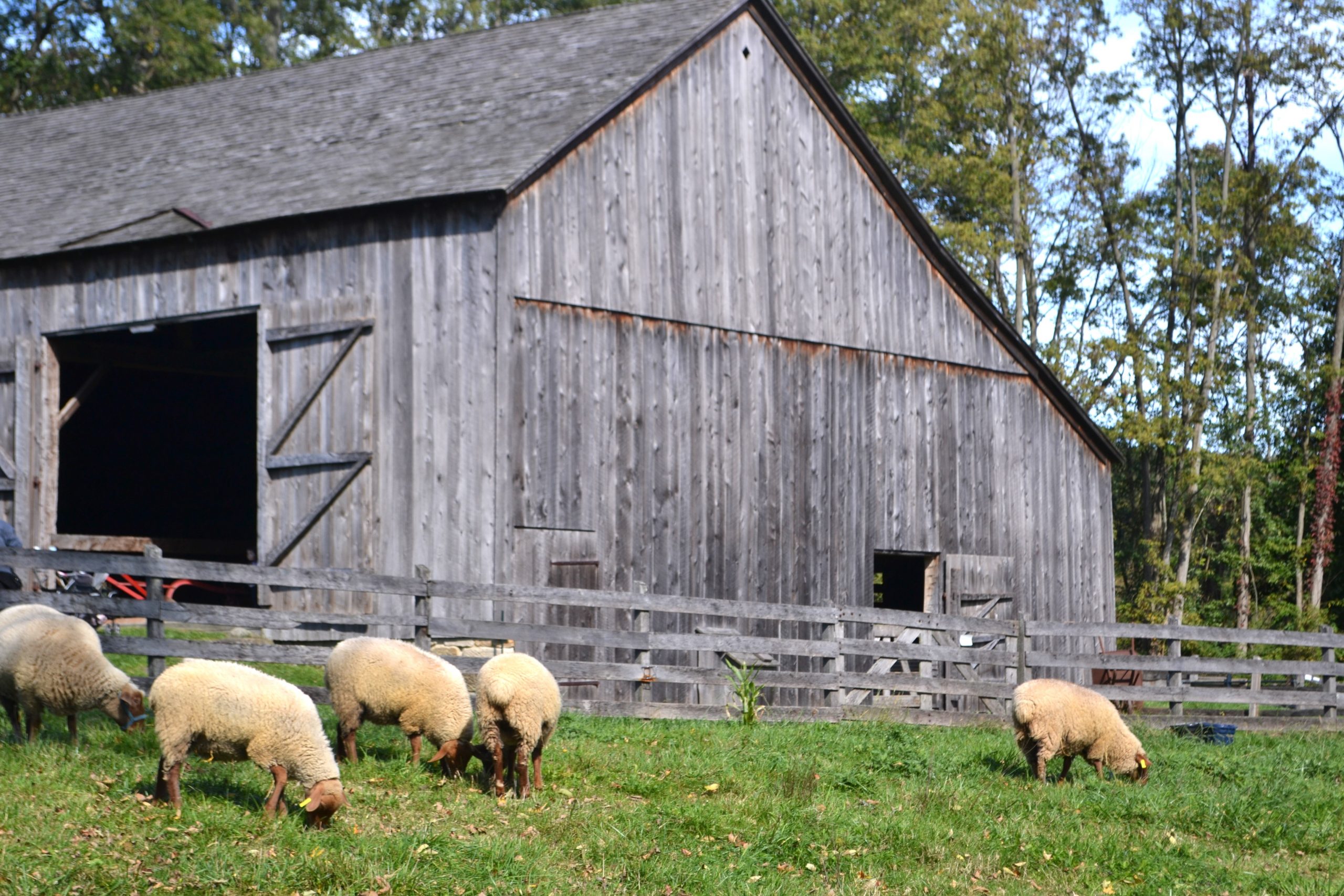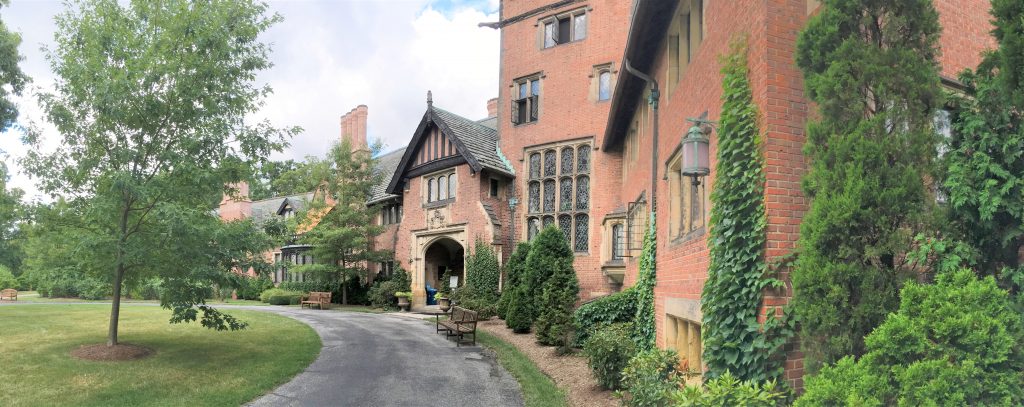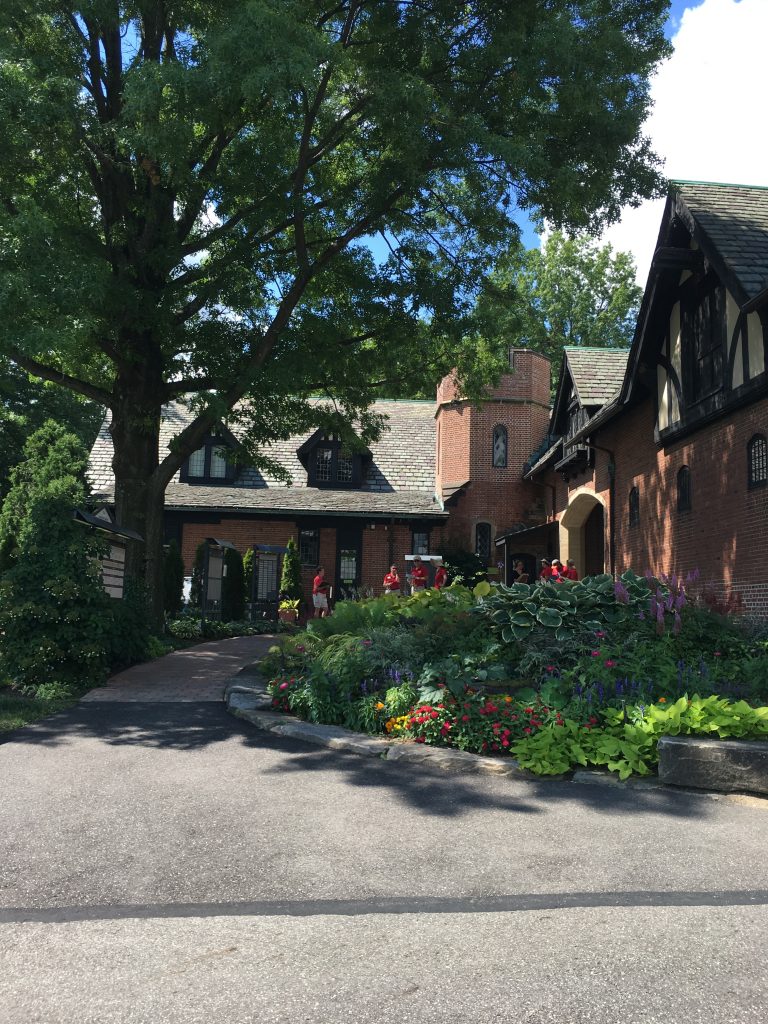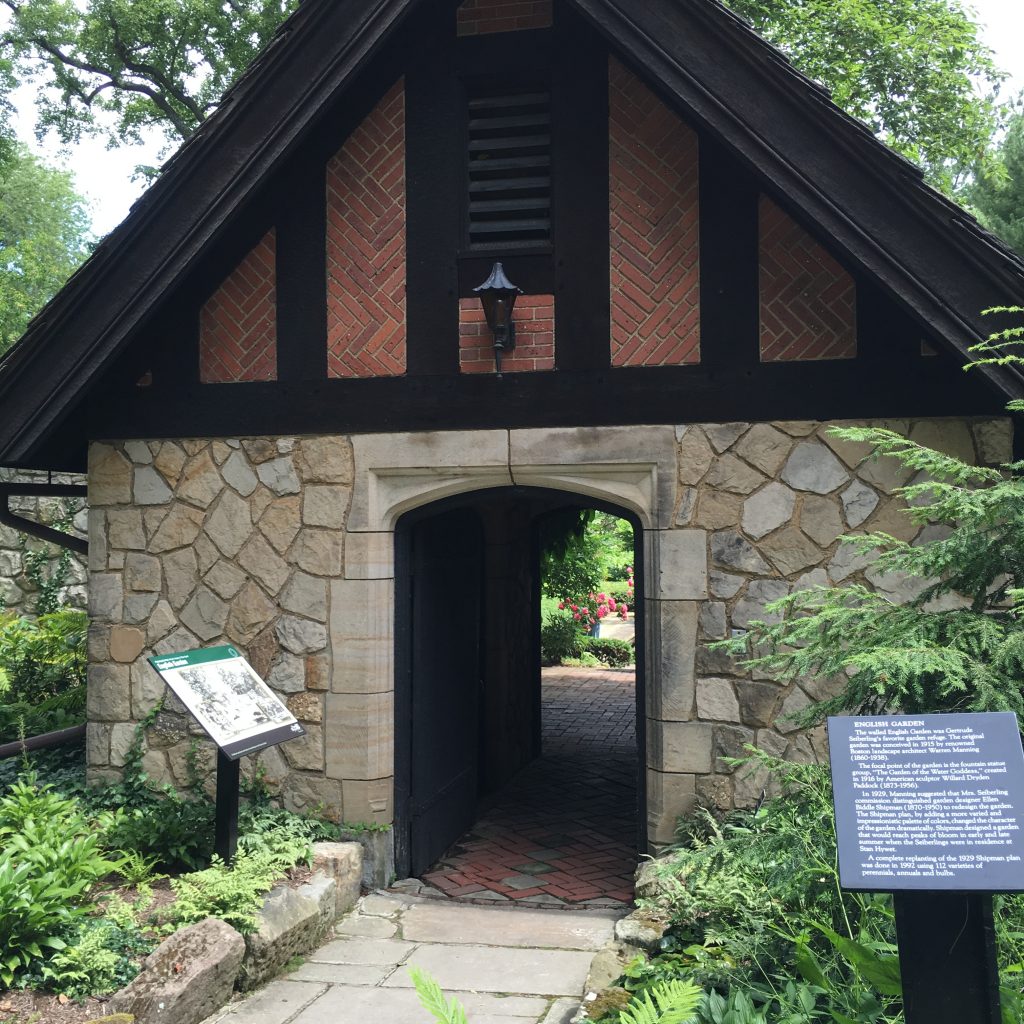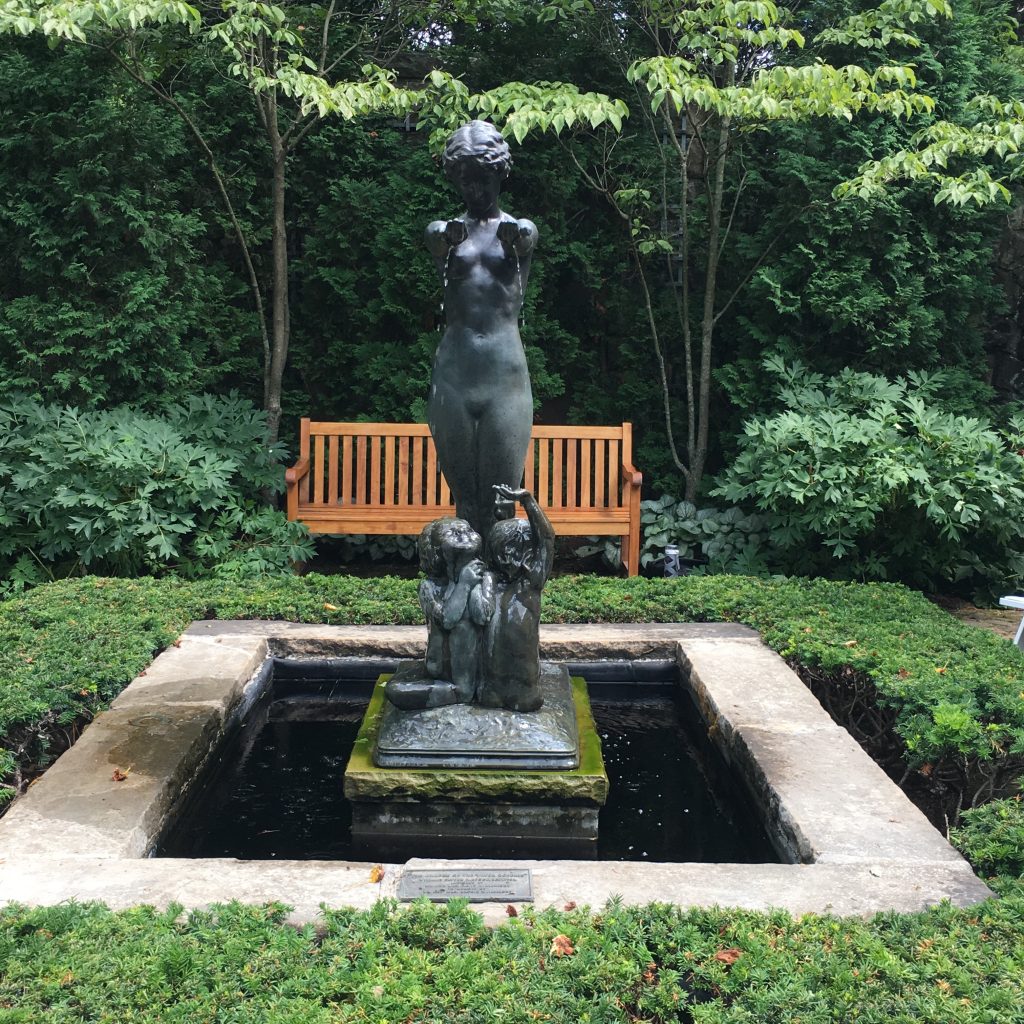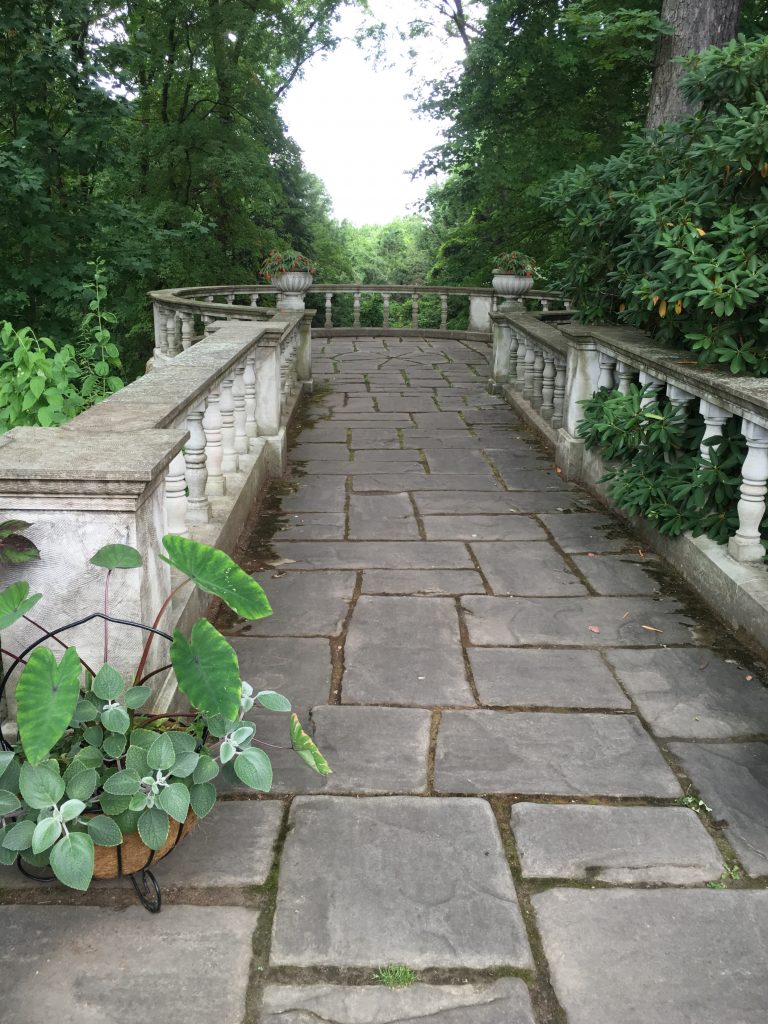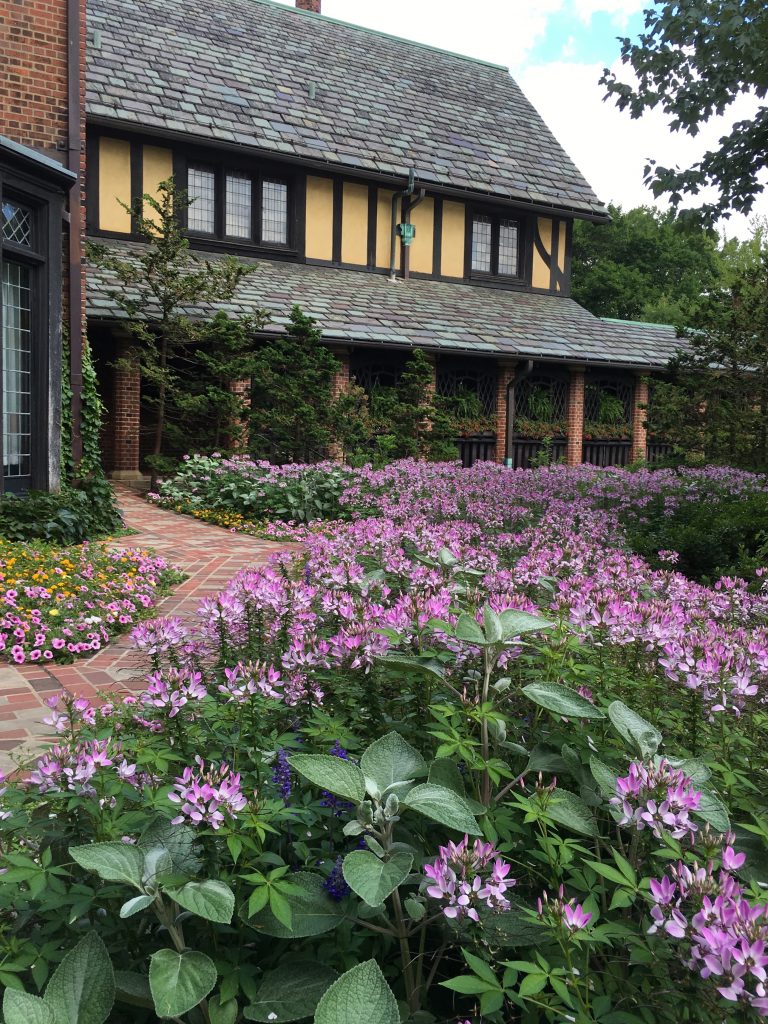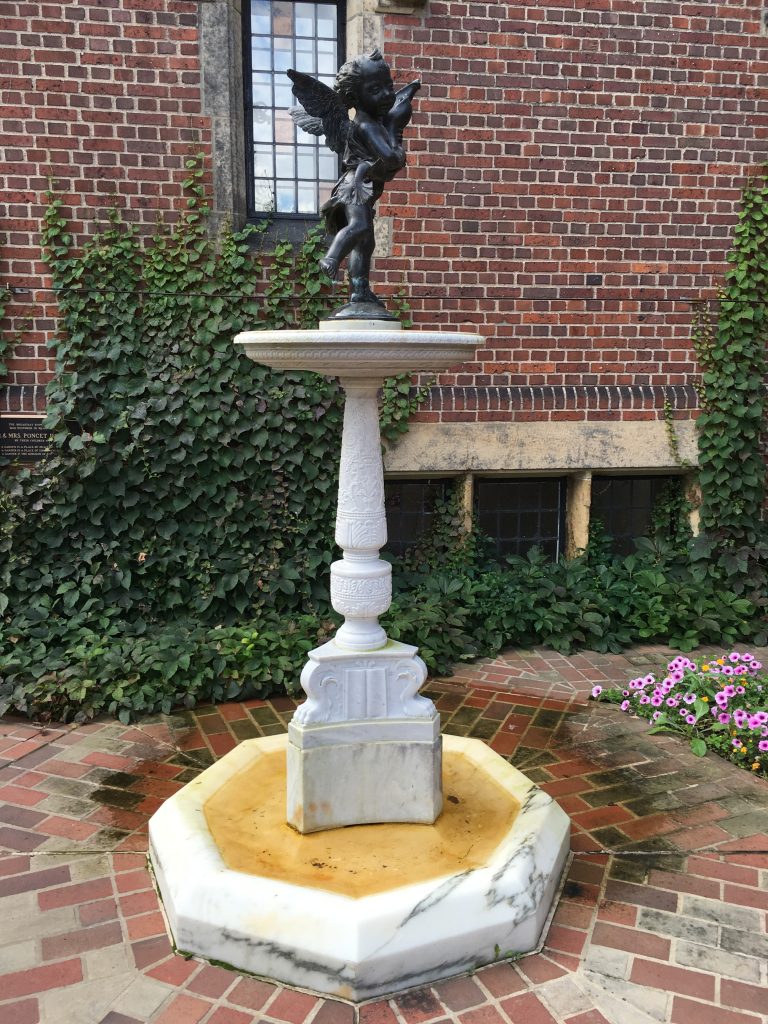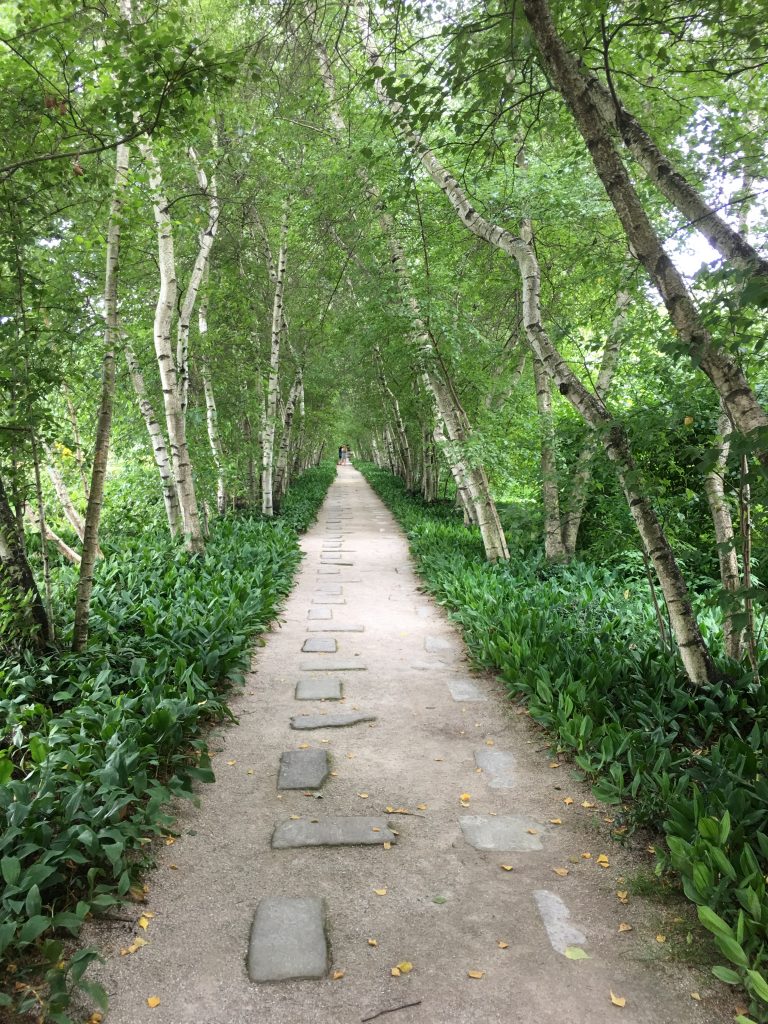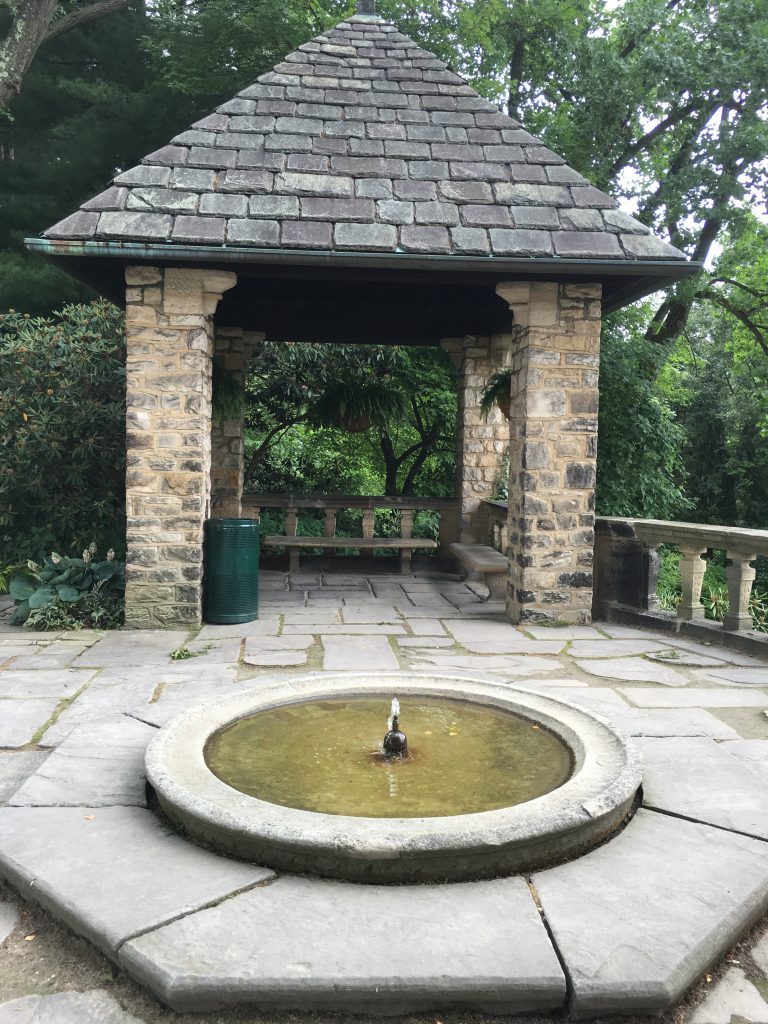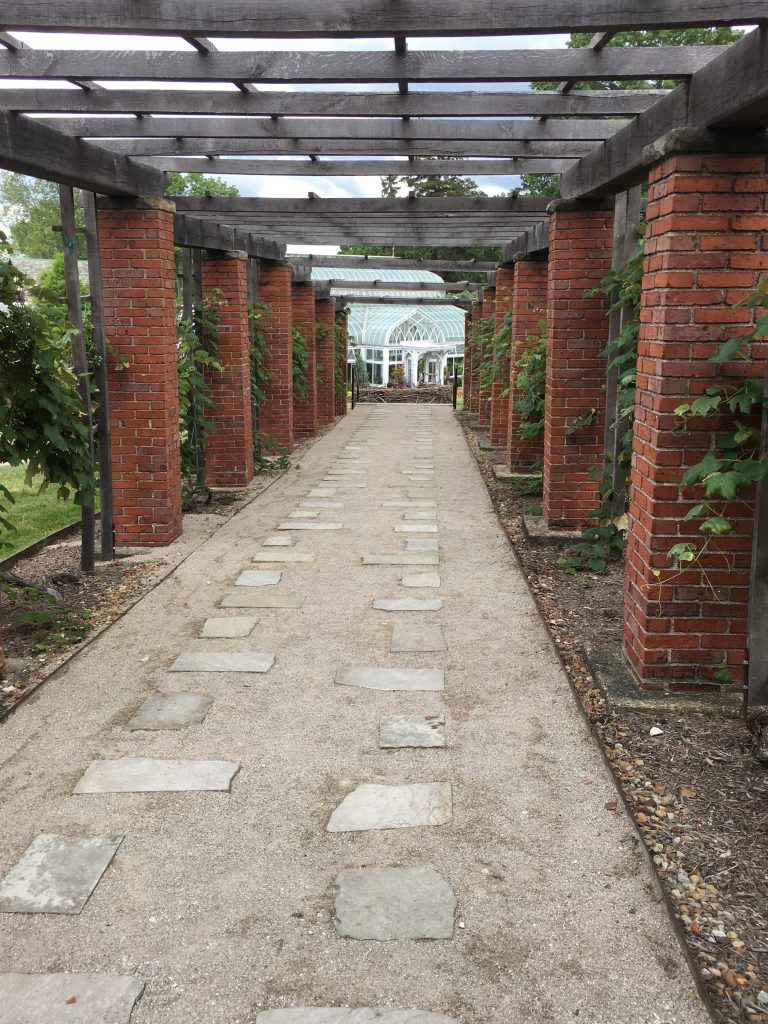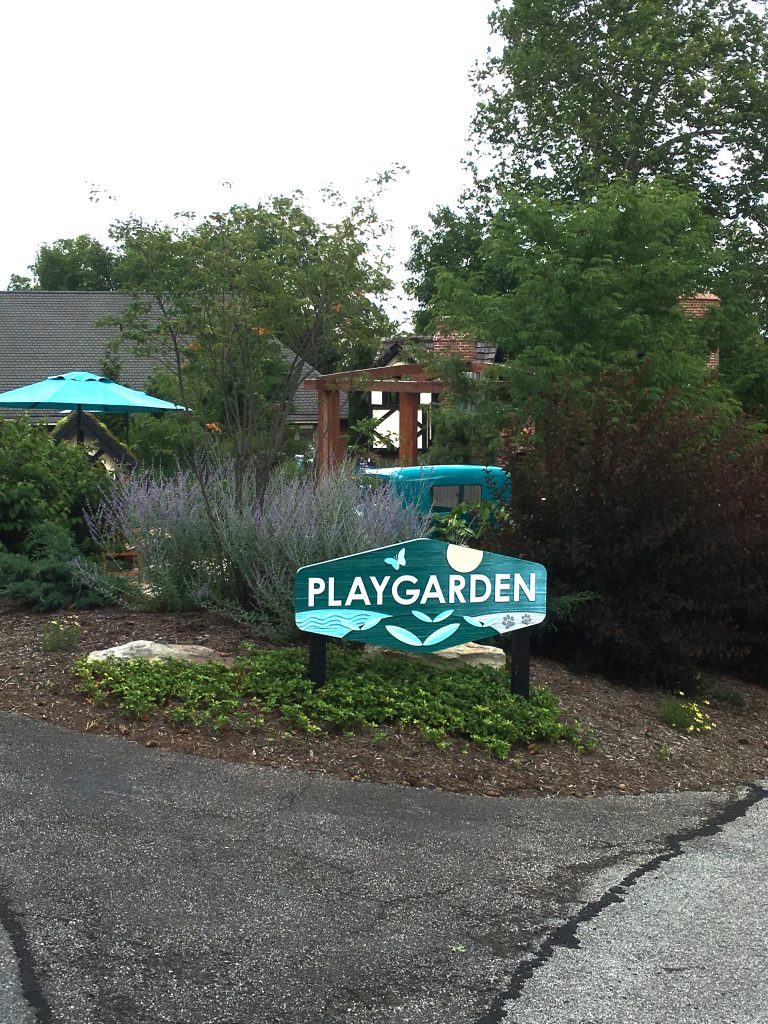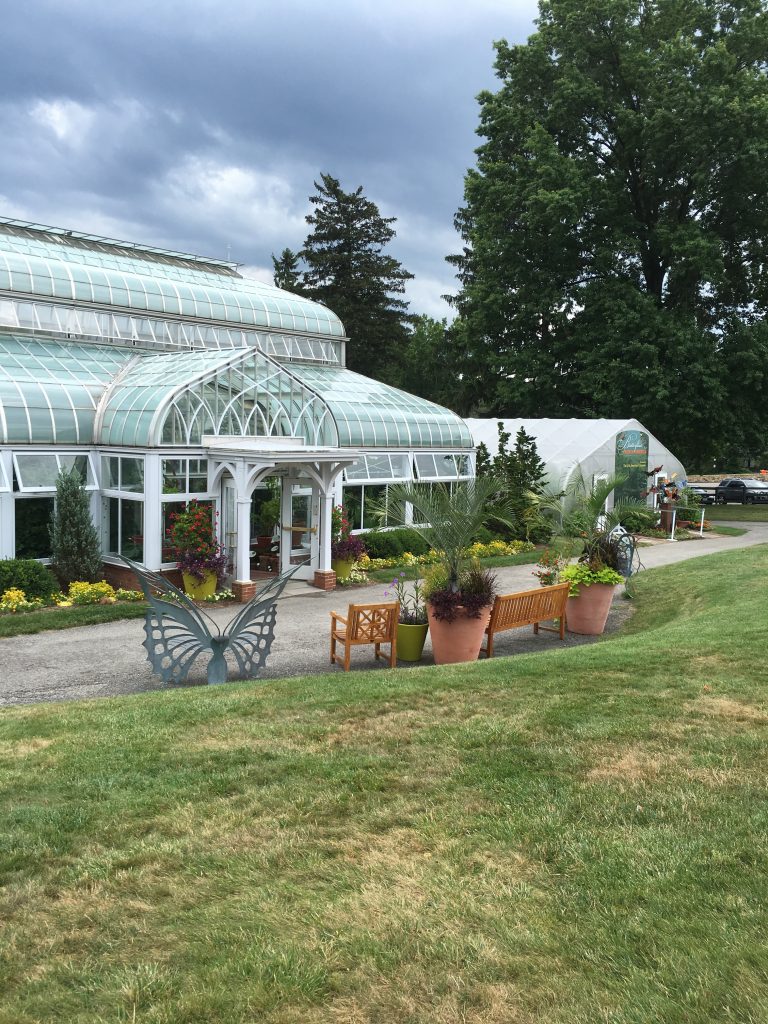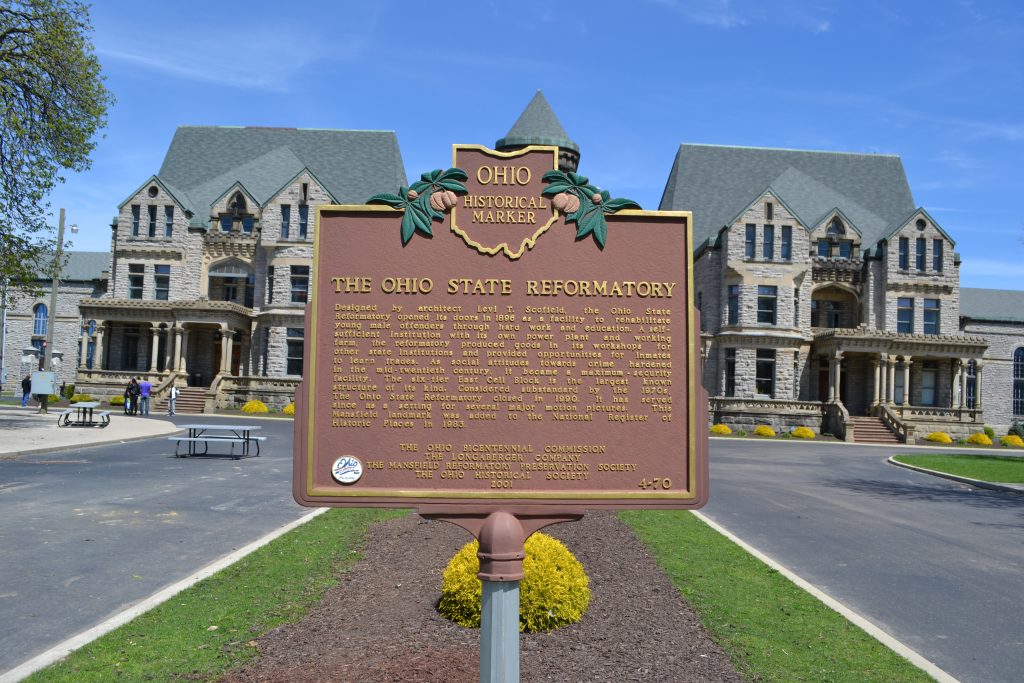
Traveling down the long drive approaching the Ohio State Reformatory, the gorgeous, stone facade seemed more like a castle than a former penitentiary. Designed by well-known Cleveland architect, Levi Schofield, the 23-acre prison was constructed in 1834 in the style of Victorian Gothic, Richardsonian Romanesque and Queen Anne architecture.
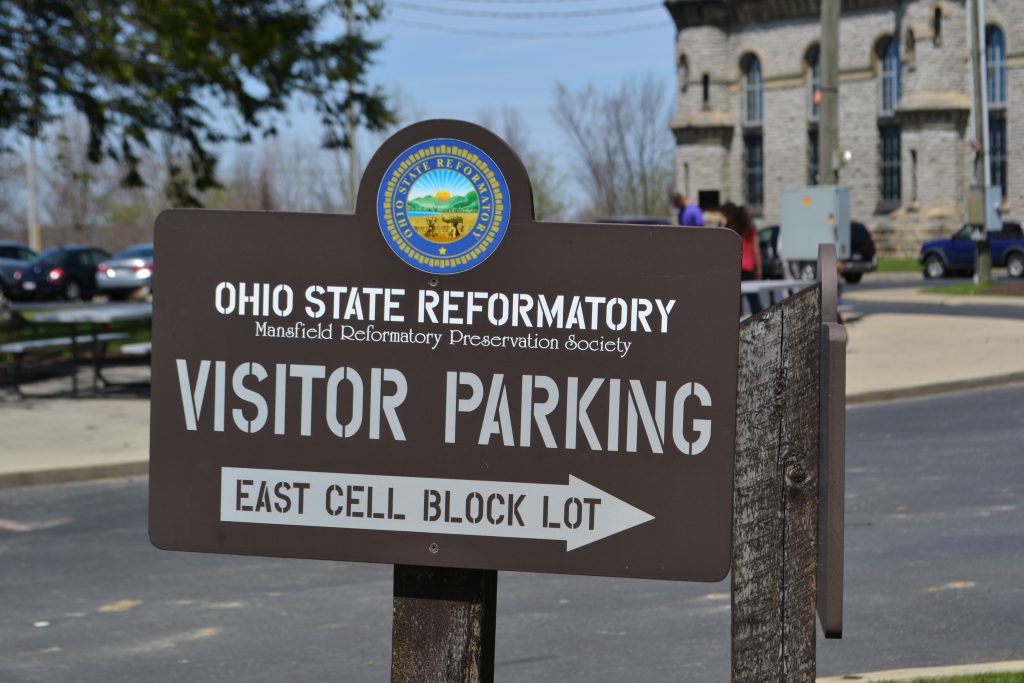
Following along the beautifully manicured garden, I soon entered the parking area at the East Cell Block Lot. Tour options for exploring the reformatory included a self-guided tour or an audio tour for an additional cost, both lasting a little over an hour. In addition to its history, I also learned that there were tours focused on the Reformatory’s paranormal activity.
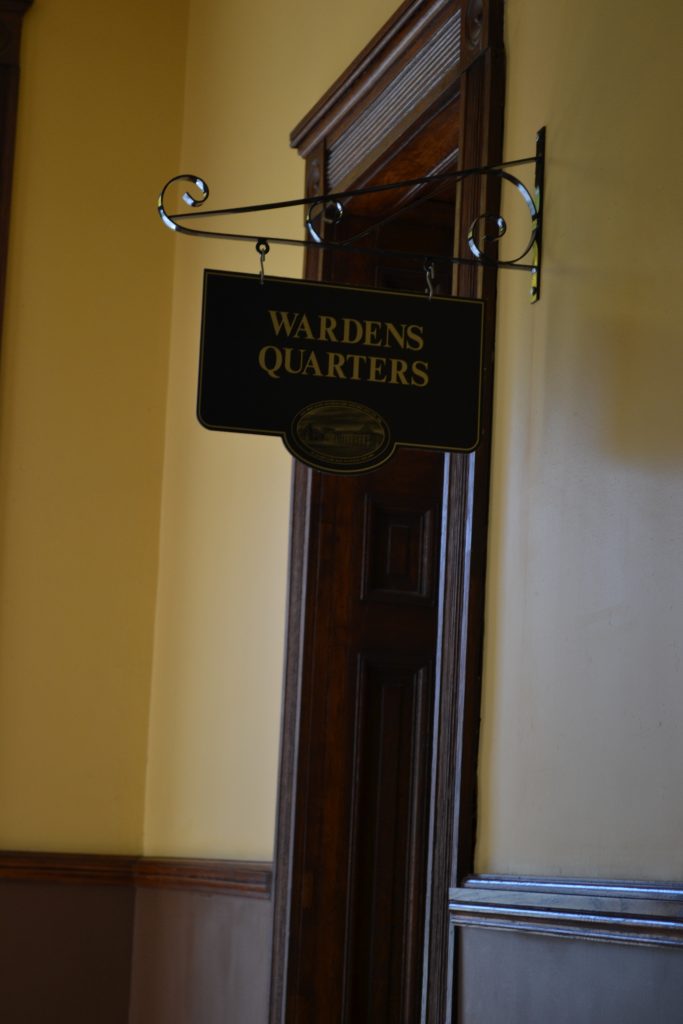
Upon entering, visitors are first introduced to the Warden’s Quarters which are located on the second floor of the building. It was common at that time for the warden and his family to live on the grounds of the reformatory. Provided with separate living space apart from the prison, they conducted their normal everyday family activities while the warden was available to take care of any emergencies that may have occurred at the prison.
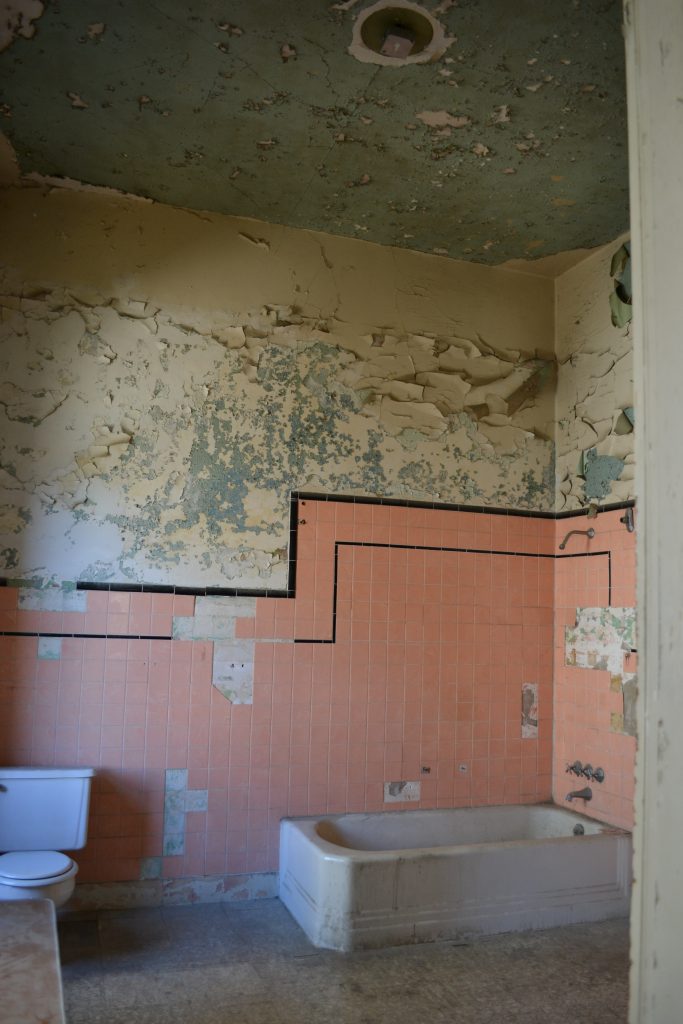
Arthur Glattke was the last warden to live on the premisess during the 1950s. Tragedy struck the family when Glattke’s wife, Helen was shot by a handgun which discharged as she was reaching for her jewelry box in the closet. She died of pneumonia three days later due to complications of the gunshot. Arthur continued his employment as Superintendent until 1959 when he suffered a fatal heart attack in his office.
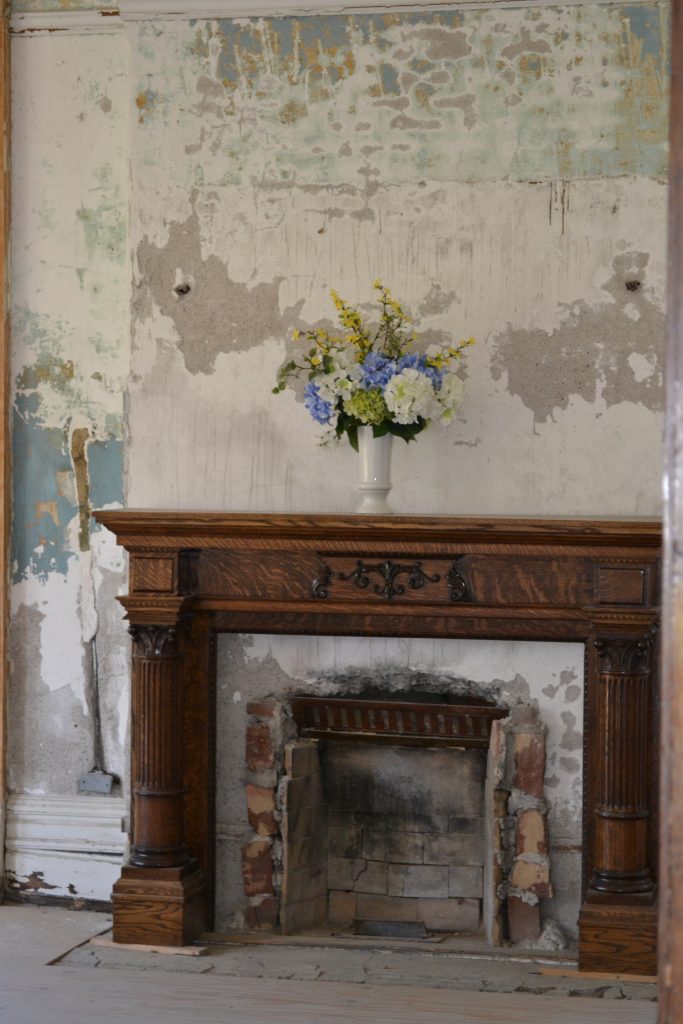
Visitors have claimed to see the ghost of a woman in the family bedroom of the Warden’s quarter. Some have heard doors closing, furniture moving and even the piano playing. Others have heard audible voices including instances of a woman insisting “I’m not dead” or smelling the scents of perfume or cigar smoke.
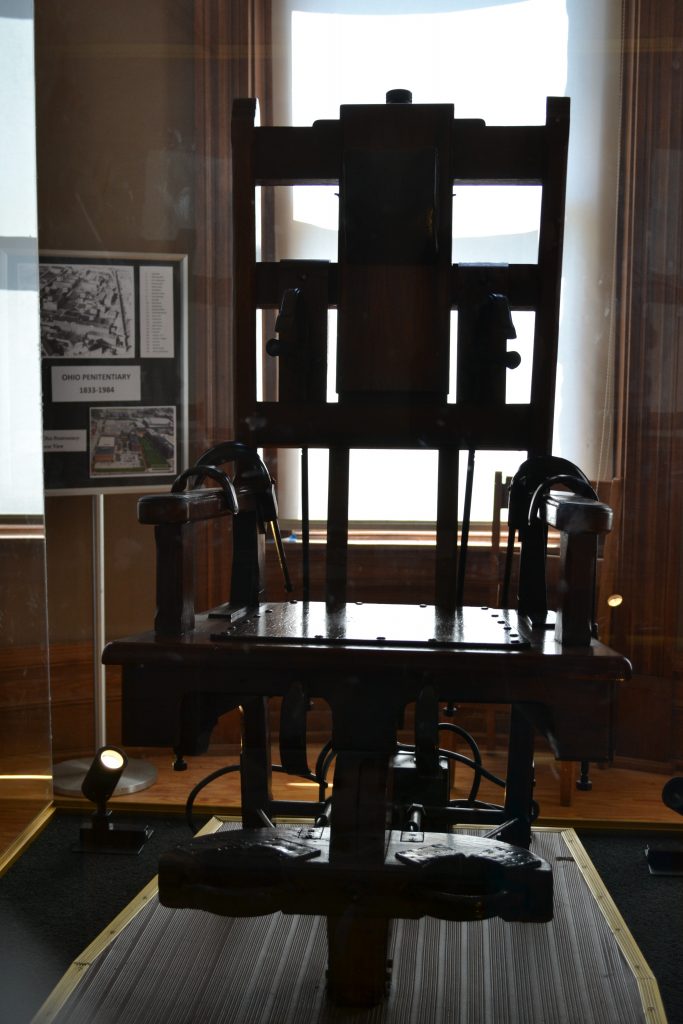
Just around the corner is a replica of the electric chair. During the time the institution was open, the death penalty was carried out by electric shock until this method was deemed unconstitutional in 1972 by the US Supreme Court. Surprisingly, prisoners were not executed at this location but rather at the nearby Ohio Penitentiary in Lucasville.
William Hoss, a convicted murderer and rapist, was the first Ohioan to be executed by the electric chair when he was only 17 years old. Between the years of 1897 to 1963, there were 311 men and 3 women who would die by the chair in the state of Ohio.
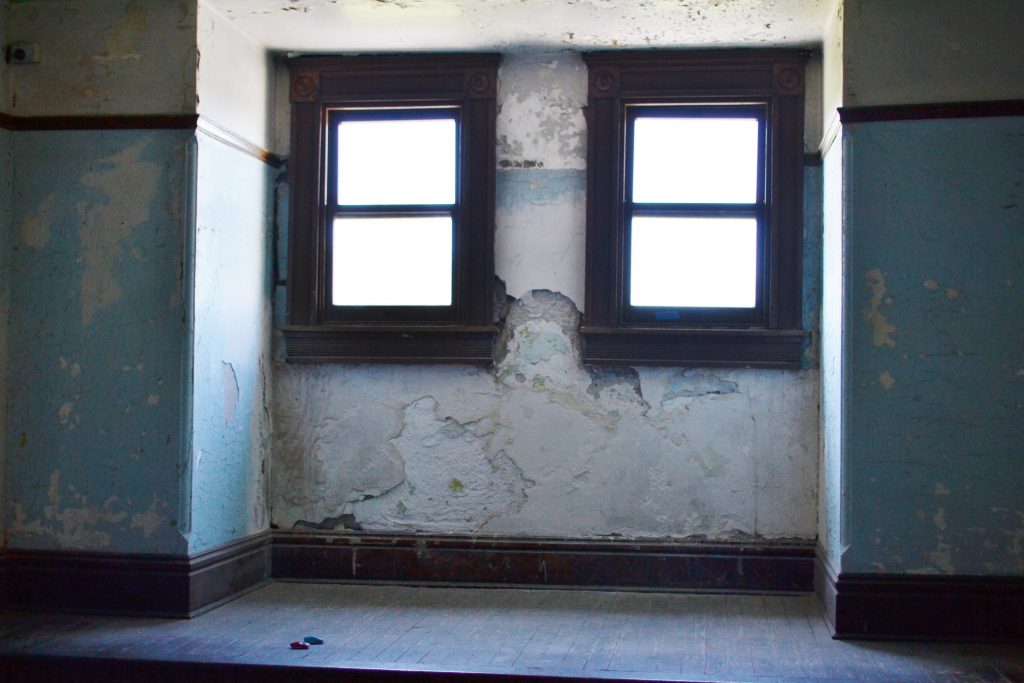
The tour continued downstairs where a separate room was set apart for entertaining dignitaries in addition to the Mayor, Governor or other government officials. A small stage remains where vocal soloists or violinists would perform.
Visitors have also experienced paranormal activity here. Some have seen the ghost of a small boy playing hide and seek or standing on the stage, yet no child matching the description of this boy has died here. Sightings of a person’s shadow entering a nearby hallway have also been reported around this location.
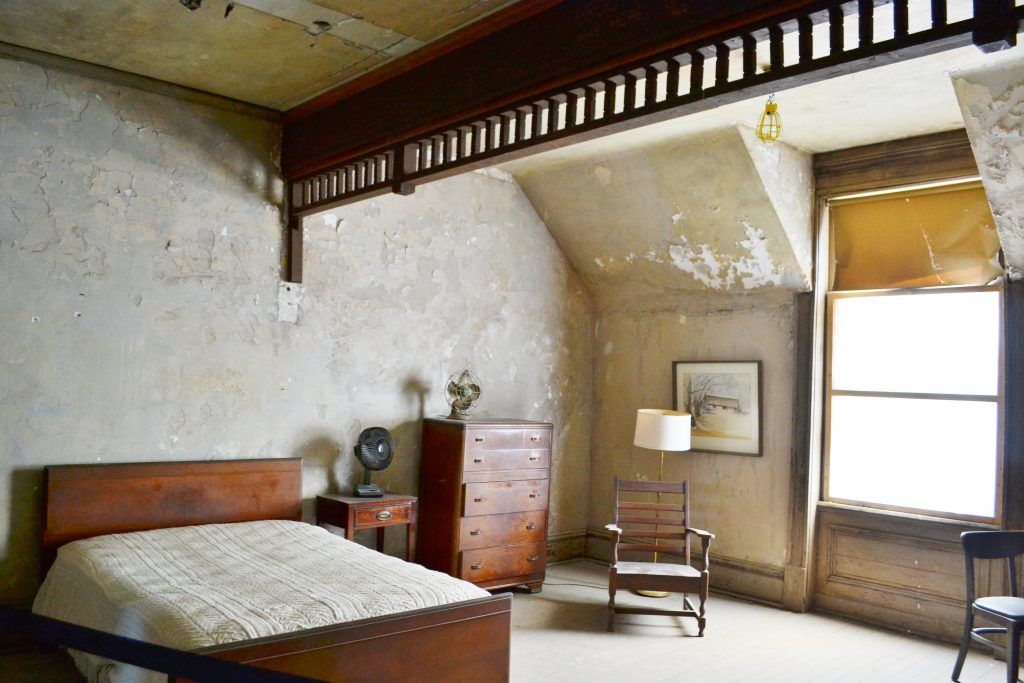
Walking through a corridor, I arrived at a re-creation of the Shawshank Redemption movie set for Brooks’ boarding house room. Later in the movie, Red would also live in this very room once he had been released from prison.
According to the production crew of Ghost Hunters, a shadow darted into Brooks’ room at one point of their filming and levels of paranormal activity were recorded here.
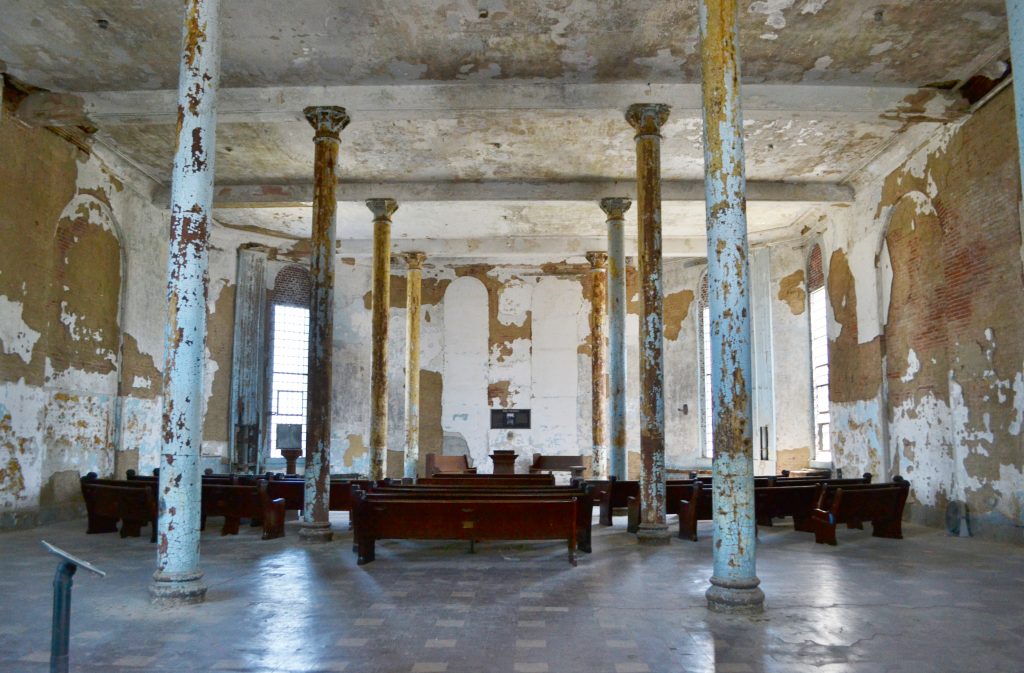
A short walk from the movie set and I arrived at the Chapel, which is where religious worship services were conducted for the prisoners. Considered a low security area, appointed inmates could come and go into the prison’s church to perform their work duties, left alone by the chaplain. That was until 1962, when three inmates unsuccessfully tried to break out of the institution by tunneling out through the storage closet. They were sentenced to solitary confinement and additional time was added to their sentence.
The detection of ghostly activity includes shadows that enter the space from the cell blocks and the sight of a woman sitting on the chapel pew sighing, crying and sometimes laughing.
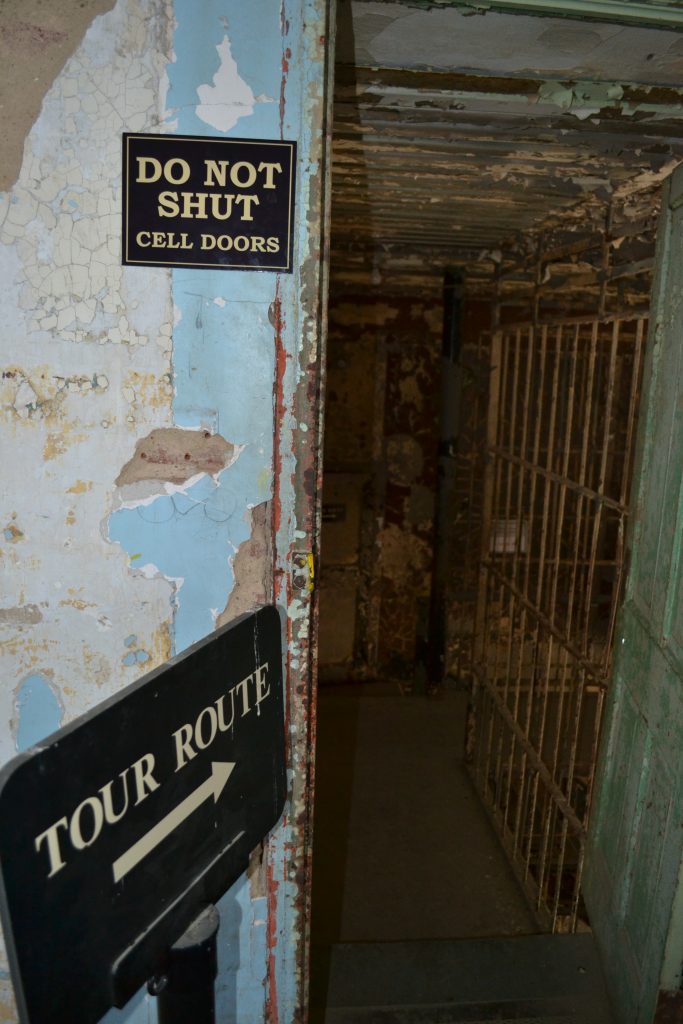
I followed signs for the tour leading out of the chapel into the inmate cells. A posted placard warns “Do not shut cell doors”. I was a little creeped out by the idea of locking myself in one of the cells, especially if it would have been during a paranormal event, but I am sure that some would find it thrilling.
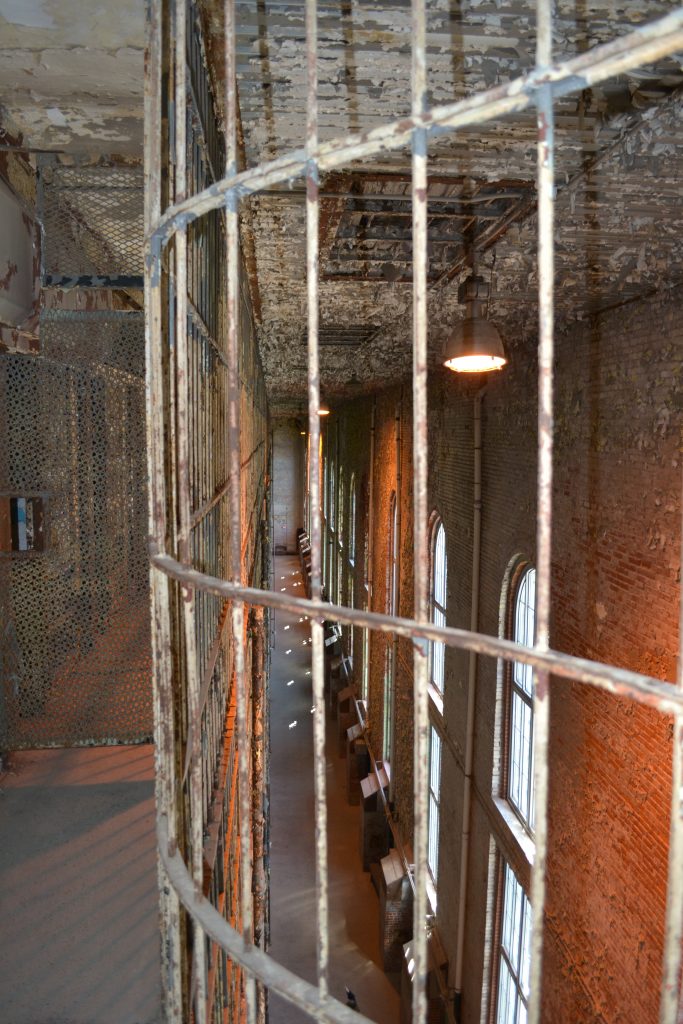
I decided, against my better judgement, to go ahead and step into a cell block. I suppose it was based on curiosity, wondering what it would have been like to have spent time here. The atmosphere was dark and the condition of the cells added to the fear of being locked in. The framing was rusting away while the paint was peeling off of the steel. Exploring the cells and what was inside, I wondered who could have been incarcerated here. Was he young or old? What was his crime?
Looking down from the row of cells, I realized that I was standing on the platform of the sixth level. It seemed so far from the ground floor and my legs were beginning to feel a little weak as I felt a short fear of heights.
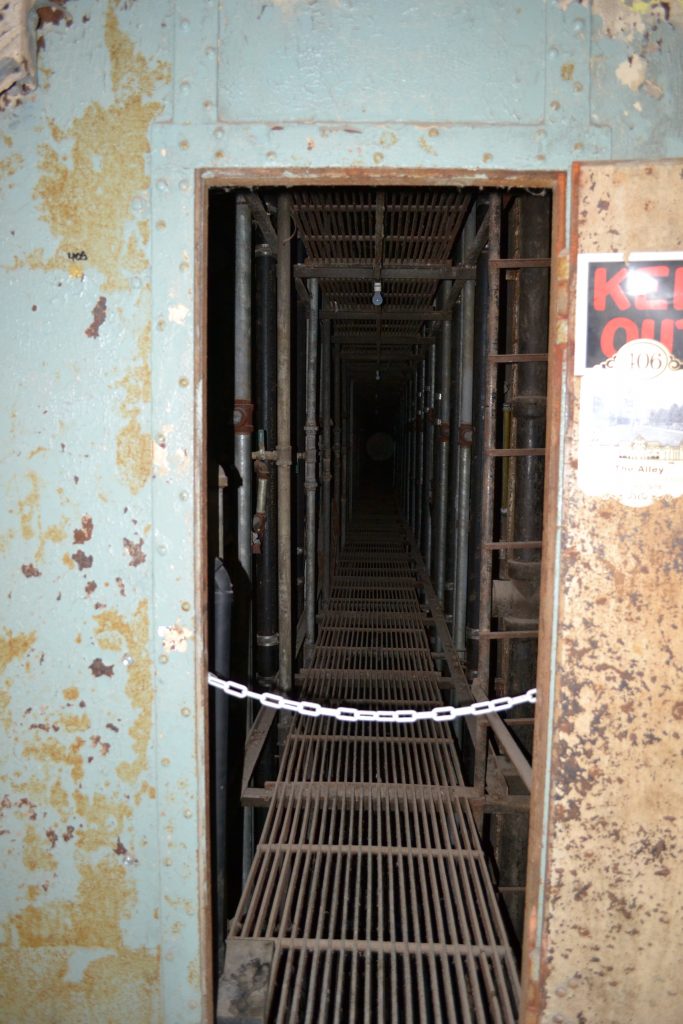
Blocked off from the tour, but within view, was a passageway known by the prison guards as the alley. The guards had the ability to enter this narrow lane where they could control the water supply to the prisoners’ cells and to eavesdrop on their conversations.
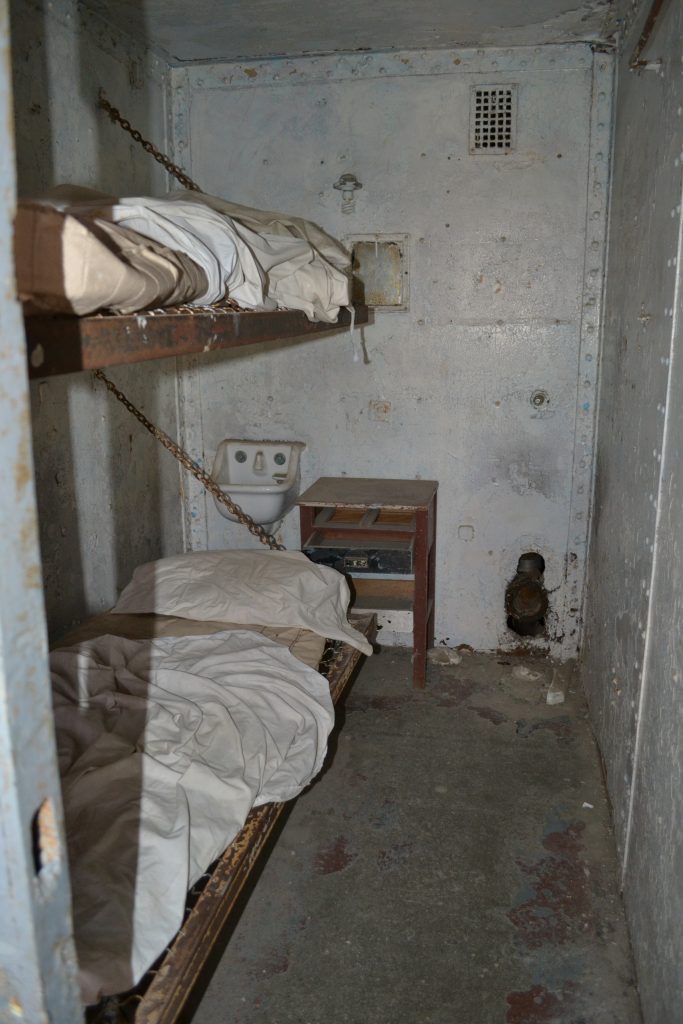
Two inmates were assigned to each cell which left them with not much space to move around. Furniture included a shared toilet, a sink and a small set of drawers for their belongings. These cramped quarters were insane. Hard to imagine anyone spending long periods of time in here.
In the 1970’s there was a federal lawsuit that stated that the number of inmates within the institution exceeded an amount deemed unconstitutional. It was at the height of the reformatory when over 2200 offenders were imprisoned here at one time. In 1983, conditions improved and there was a decision that the maximum number of prisoners would not reach amounts over 500 at a given time.
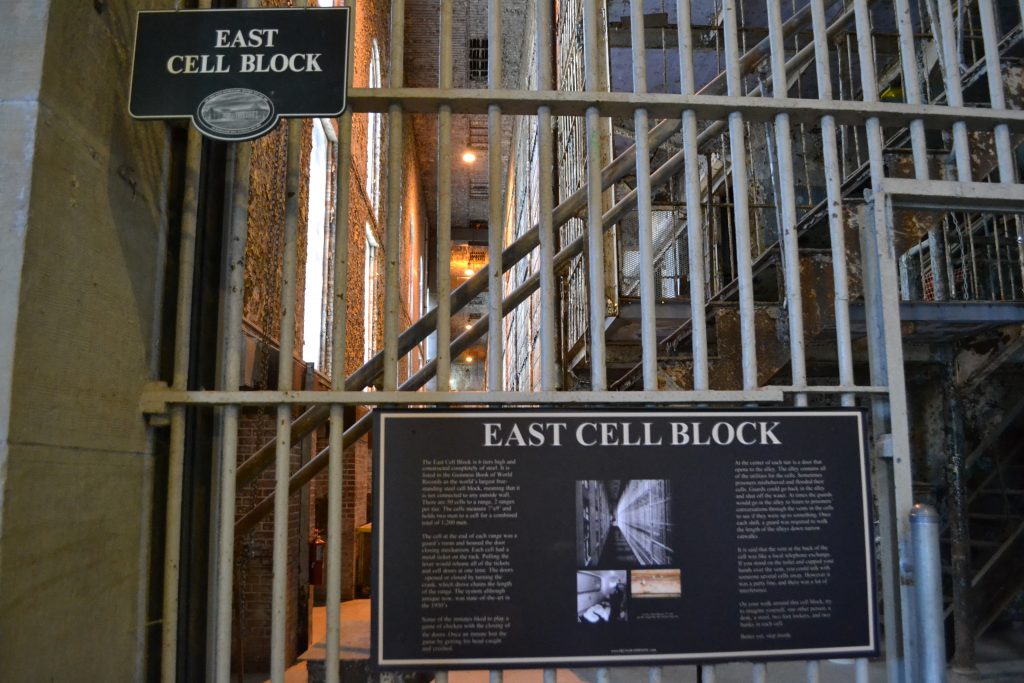
Sightings of paranormal activity have been recorded in the East Cell block. People have noted events where they can hear someone talking and snoring as well as feelings of being followed, watched and even touched.
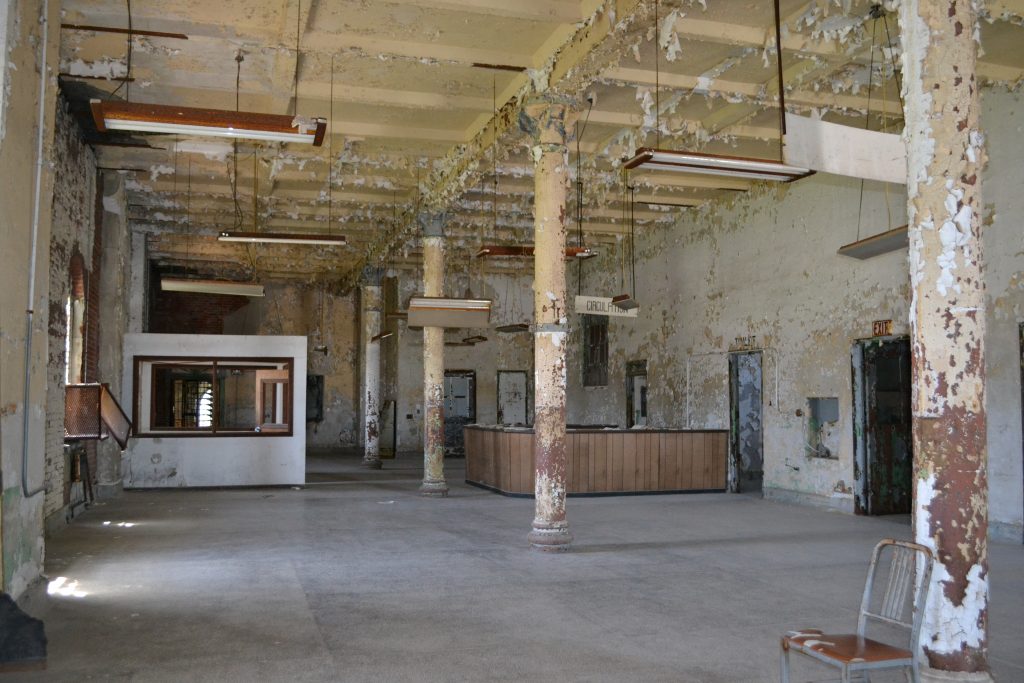
I crossed the long corridor of cell blocks and down a couple of flights of stairs until I reached the 3rd floor, east wing, which housed the prison hospital. It had the reputation of providing better medical care than most of the hospitals on the outside where top doctors provided surgical care, physician services, anesthesiology, dentistry as well as ear, nose and throat therapy. This area was later converted into a library once a new hospital was built in 1951.
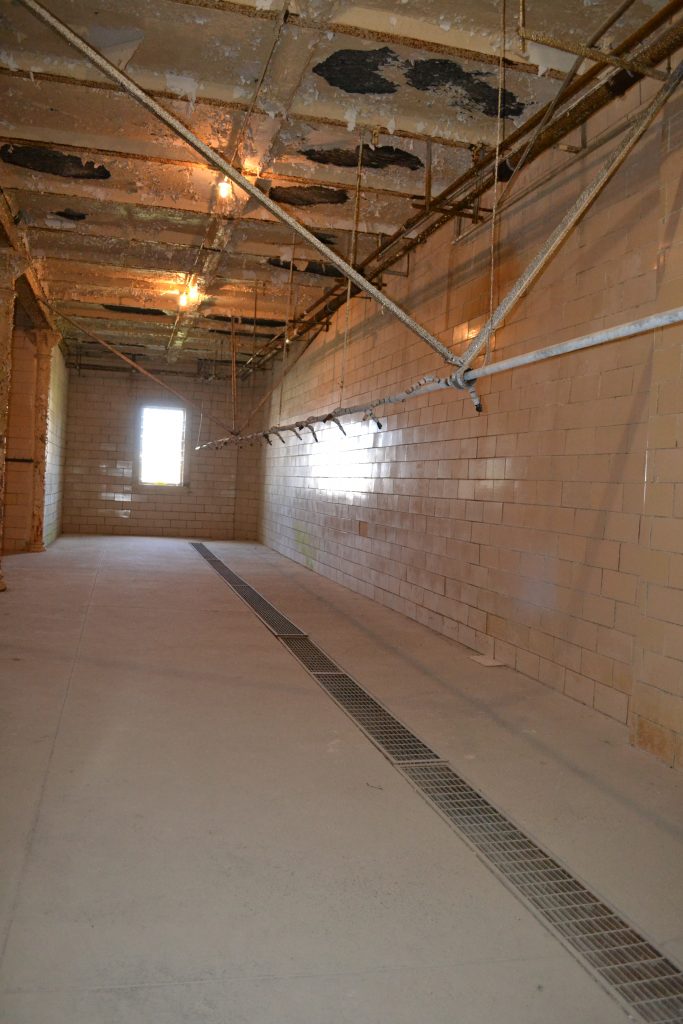
Entering the shower room, I was surprised by the small shower heads that lined the interior. Nicknamed the car wash, prisoners would start from one end of the pipes walking their length instead of standing underneath as one would in a normal shower.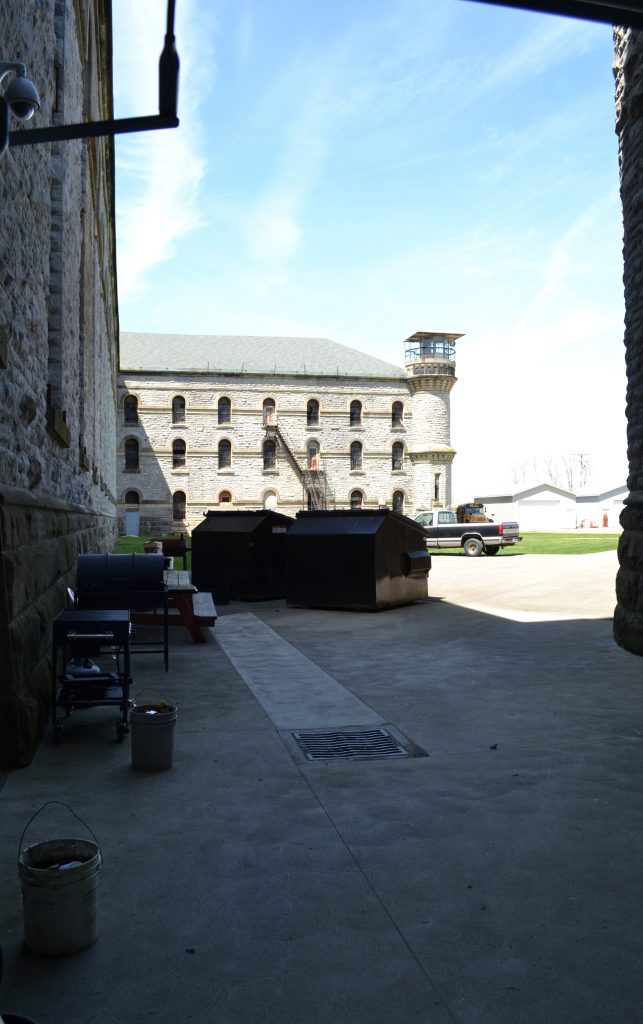
With so many inmates, there was no doubt that the reformatory would require a kitchen and additional cooking space. A granary, creamery, cannery, butcher shop and dining room were a part of the dining complex. Two waiters were assigned per table and talking was not permitted during meals. With an increase in population, the dining hall flowed outside referred to as “the yard”. 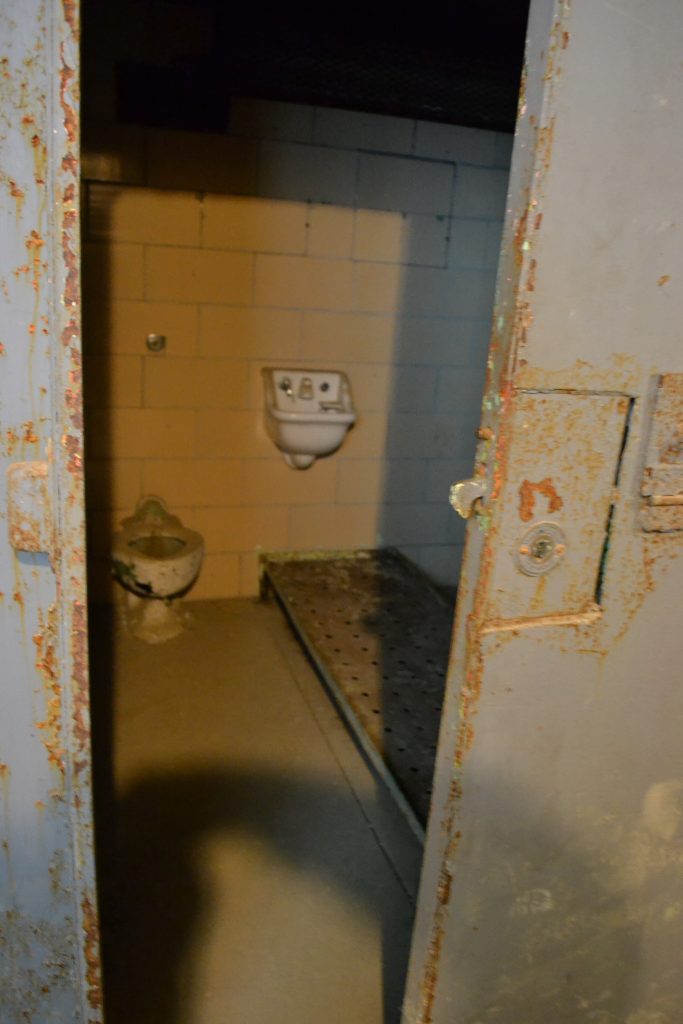
Solitary confinement was punishment for those prisoners who did not conform to the reformatory’s rules. When an inmate was sent to the “8 & 8”, he was required to stand for 8 hours in a closet sized room and then slept on the floor for the next 8. Spending time in solitary confinement was considered “dead time”, which meant that the time spent in seclusion did not count towards time served.
When measuring paranormal activity, unusual sounds were recorded in this area. People have also claimed that such strange events occurred where they were punched, smacked or had their hair pulled. Some visitors felt an overwhelming feeling of illness.
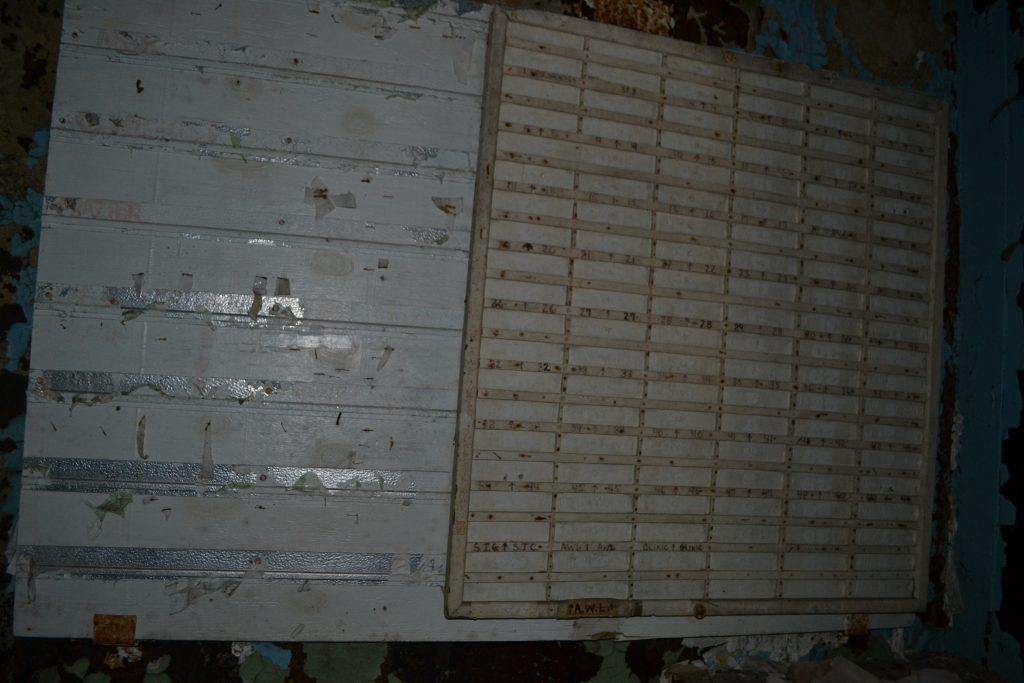
The mailroom was small with several boxes to collect mail. Inmates were permitted to receive mail, but not before it was scrutinized by the guards looking for contraband. During the war, prisoners were not able to access newspapers and relied on the guards to provide daily news of the outside. I imagine on the inside, it seemed like a completely different world with its own news and current events
Since its opening in 1896, it is amazing to think that in the 94 years the institution was in operation, 155,000 inmates passed through these doors. The idea of prison reform remains controversial, but we can all agree that the system has come a long way since the 19th century with the improvement of current prison conditions.
Have you had the opportunity to visit the Ohio State Reformatory? I would love to hear about your experience if you would kindly leave a message in the comments section below! Many thanks and Happy Travels!
What to See and What to Do:
The Ohio State Reformatory
100 Reformatory Road
Mansfield, OH 44905
Telephone: 419 522 2644
- Admission: Self-guided tours for adults (18 & up) are $12 while guided tours cost $17. Students (7 – 17), Seniors (age 60+) and College ID and Military are $10 for self-guided tours and $15 for guided tours. Children 6 and under are free and there is an additional $5 cost for the audio wand. NOTE: Cash only, but there is an ATM machine provided.
- Hours: Winter Hours (February 2 to March 31) are from 11 AM to 4 PM, Friday, Saturday and Sunday only; Spring/Summer Hours (April 1 to September 2) are from 11 AM to 4 PM, daily; Holiday Tours (November 24 to December 17) are from 11 AM to 4PM, daily
- Amenities: New for 2018, the reformatory will be open for abbreviated tours (September 4th – November 4th – Thursdays through Sunday only in October); self-guided tours; guided tours offered regularly between June and August on Saturdays and Sundays; Specialized guided tours include: History Meets Hollywood Tour, Beyond the Bars Tour, and the Inmate Tour led by Michael Humphrey who spent 14 months here in the late 1960s. This tour contains adult themes and is intended for mature audiences only. Please contact the Ohio State Reformatory to confirm when this tour is available.
- Scenic View: There are several scenic views of the reformatory from the Warden’s Quarters and other locations throughout the prison.
- Length of Visit: For the basic self-guided or guided tour, allow 1.5 to 2 hours for your visit. Depending on the number of guided tours you purchase, you will require additional time.
- Tips for Your Visit: Pay the additional fee for the audio tour which provides interesting information about the reformatory. Admission is cash only but there is an ATM machine provided. Wear proper shoes due to the condition of the metal stairs in the cell block. If you think you can handle it, visit during the overnight ghost tour.
Where to Stay:
Wishmaker House Bed and Breakfast
116 Main Street
Bellville, OH 44813
Telephone: 419 886 9463
Where to Eat:
Malabar Farm Restaurant
3645 Pleasant Valley Road
Lucas, OH 44864
Telephone: 419 938 5205
I started my meal with the mushroom soup which was creamy and full of flavor. As my main meal, I ordered the highly popular Reuben sandwich made of slow cooked brisket, kraut, marble rye, artisan Thousand Island and served with chips. Blog post coming soon!
Where to Drink:
The Vault Wine Bar
29 W. Main Street
Shelby, OH 44875
Telephone: 567 292 9081
The Suite Life of Travel Blog Post
I had already eaten a big lunch and decided to order the stuffed dates at The Vault which are stuffed with bleu cheese, wrapped in bacon, baked and then drizzled with balsamic reduction. I could have ordered two servings they were amazing!
What to Read:
- Rita Hayworth and Shawshank Redemption, by Stephen King
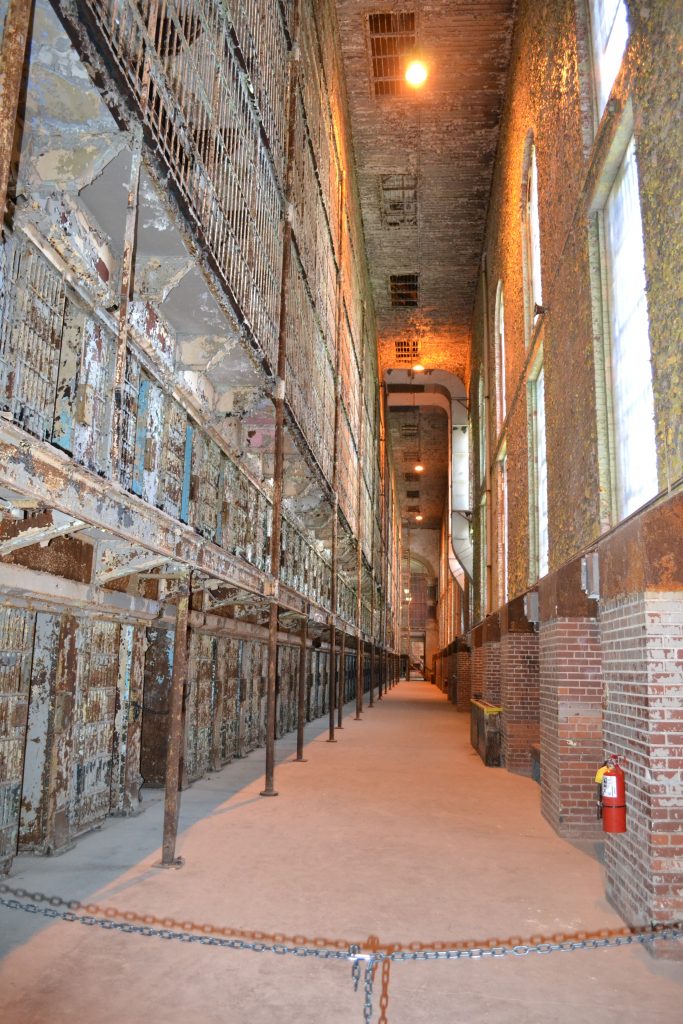
The Floor Level of the Ohio State Reformatory
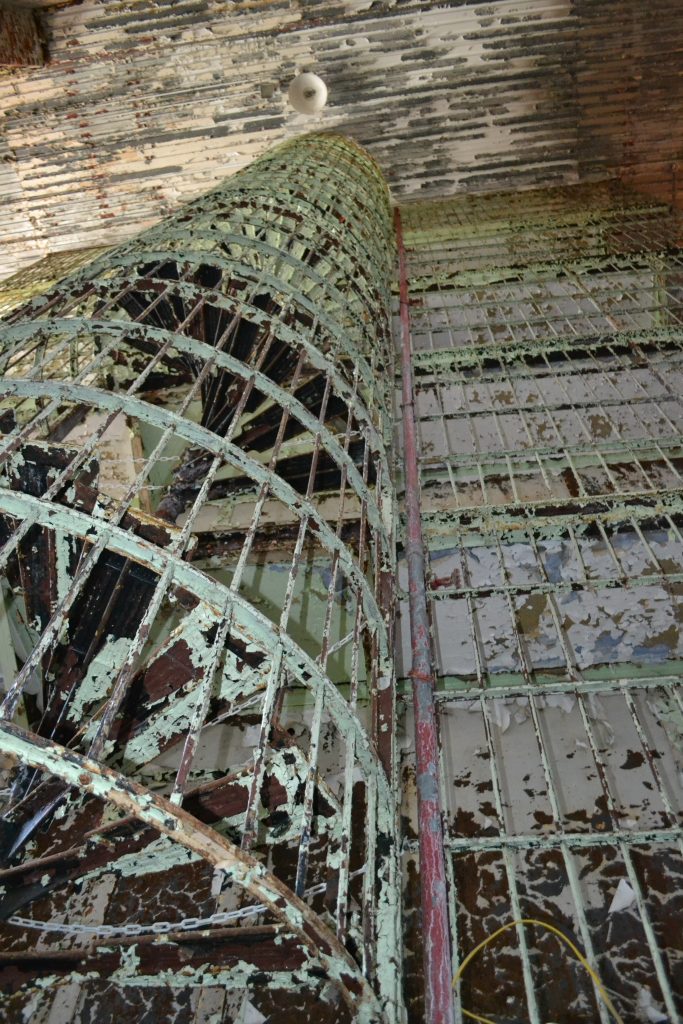
Staircase of the Ohio State Reformatory

The Cells of the Ohio State Reformatory
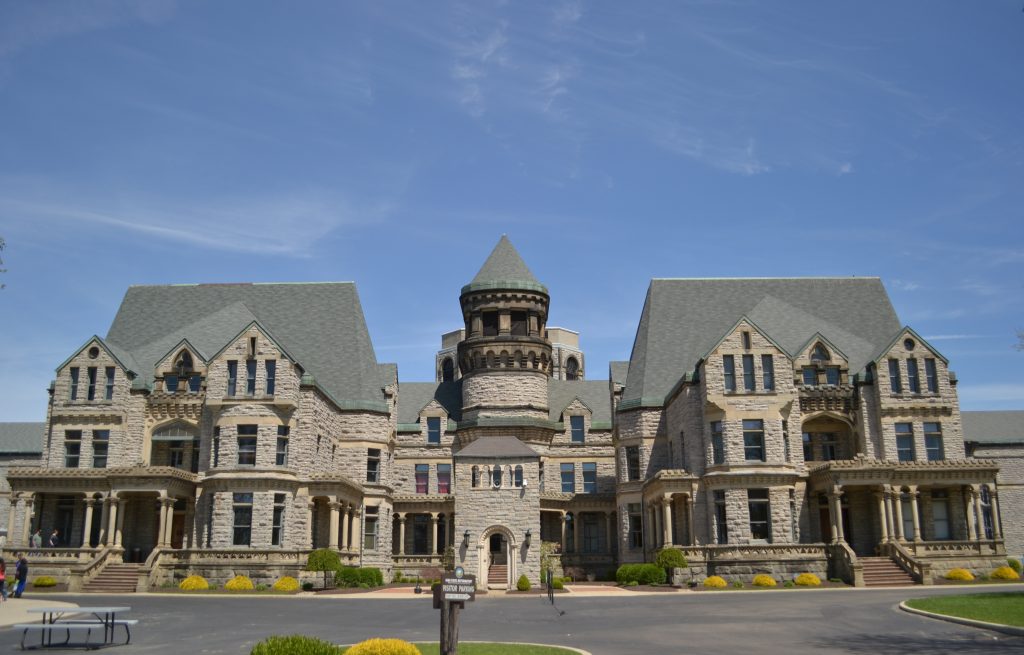
The Ohio State Reformatory, Mansfield
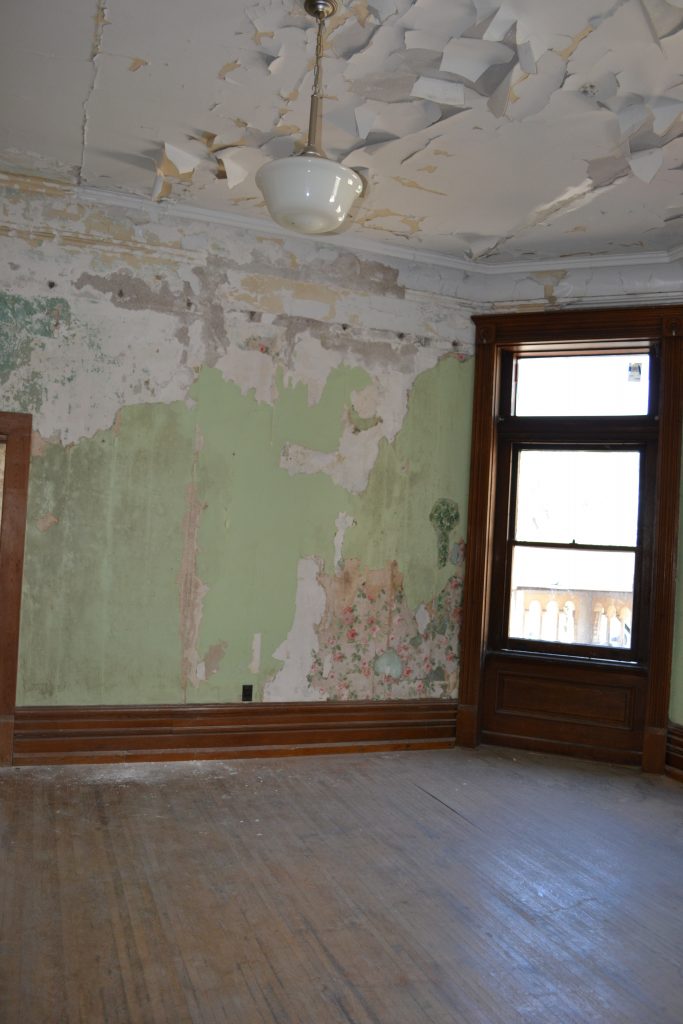
Inside the Ohio Reformatory in Mansfield
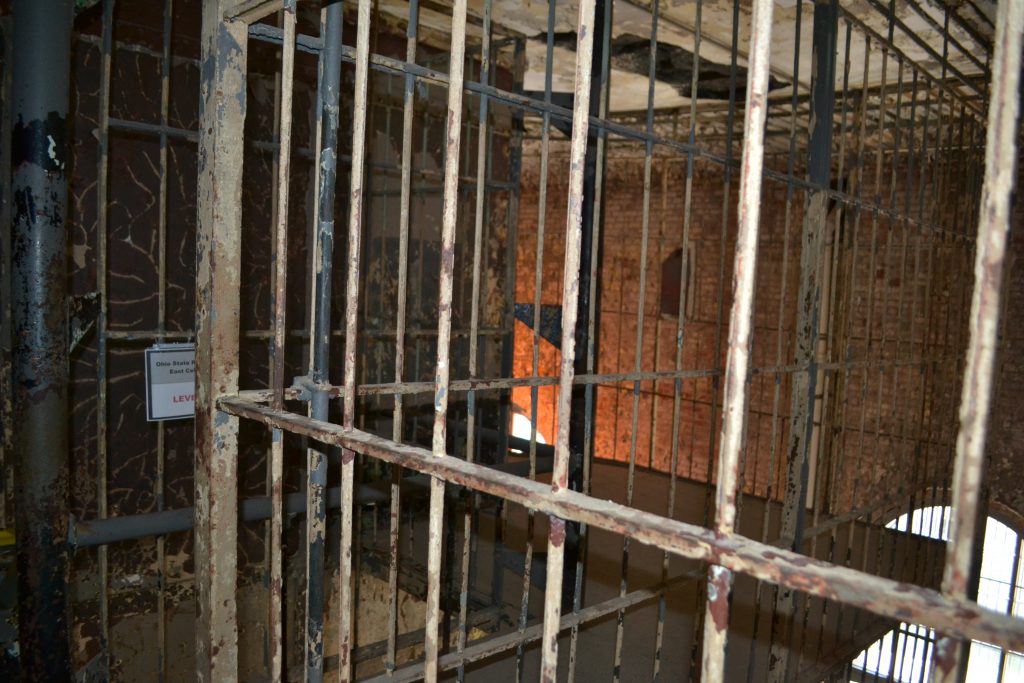
Exploring the cells of the reformatory
